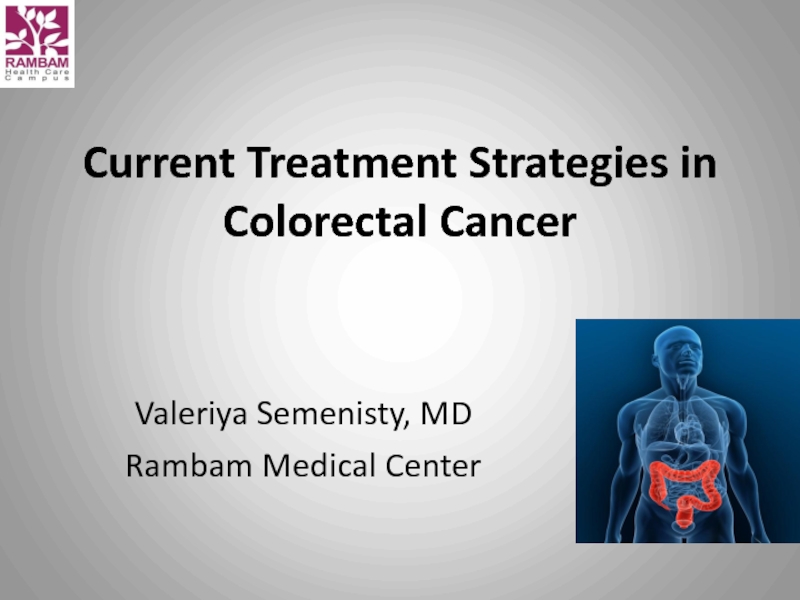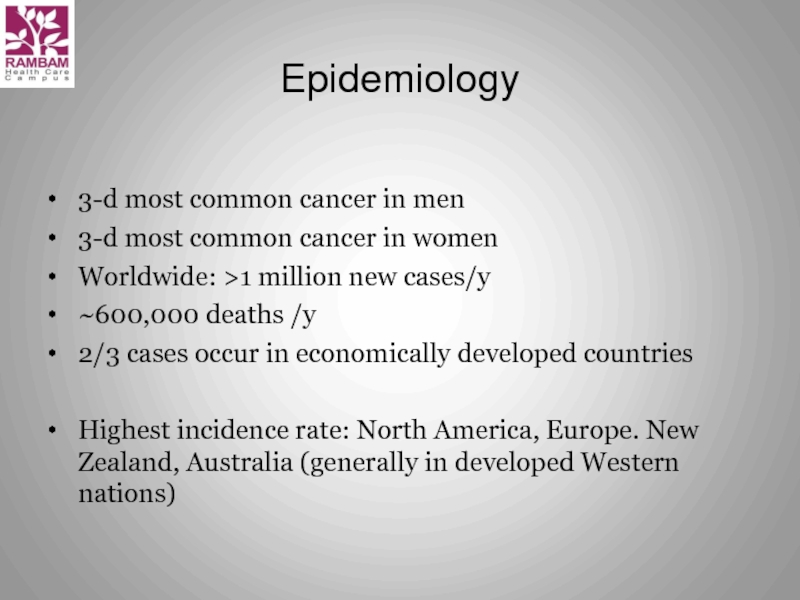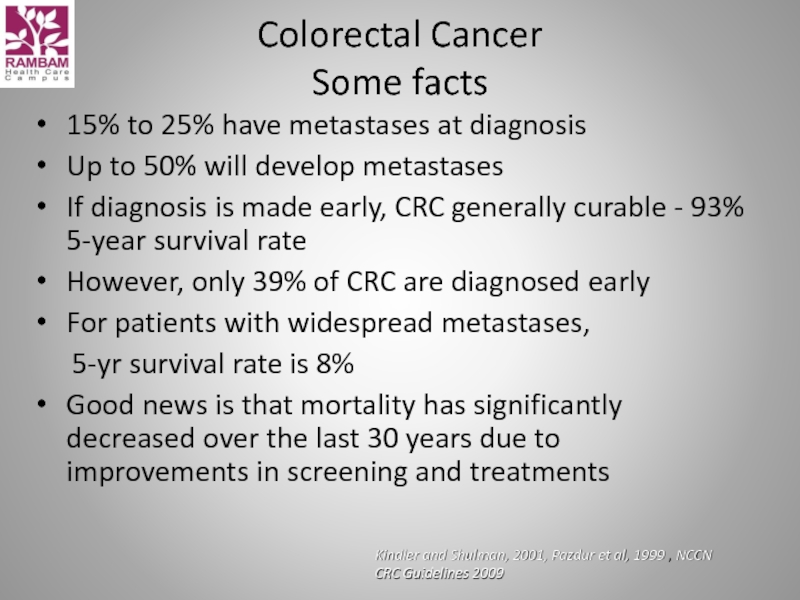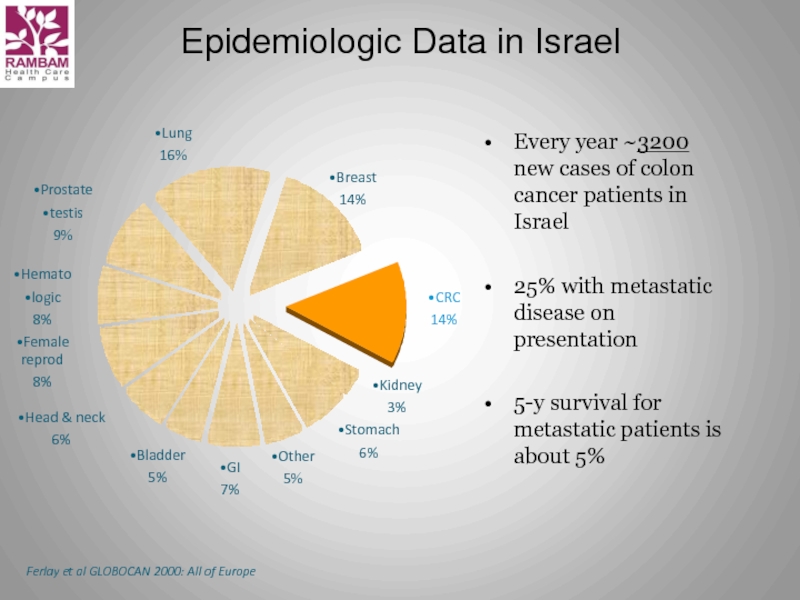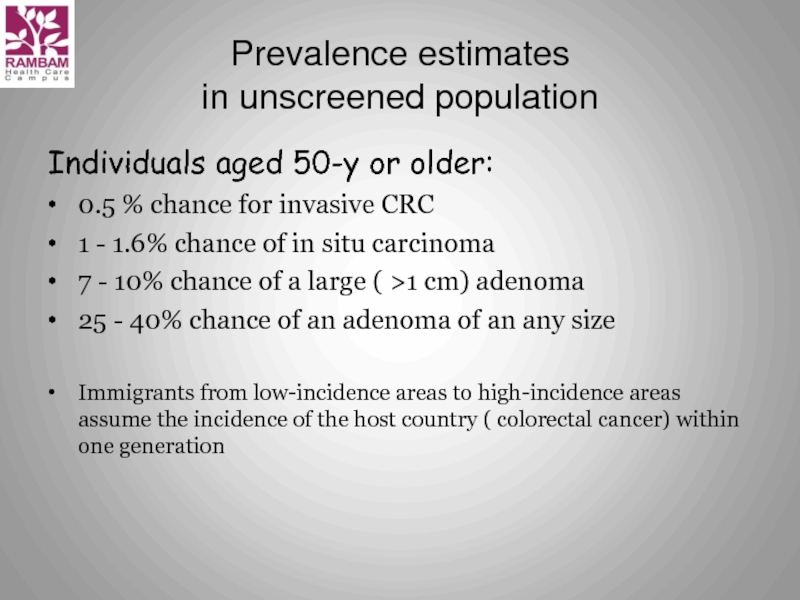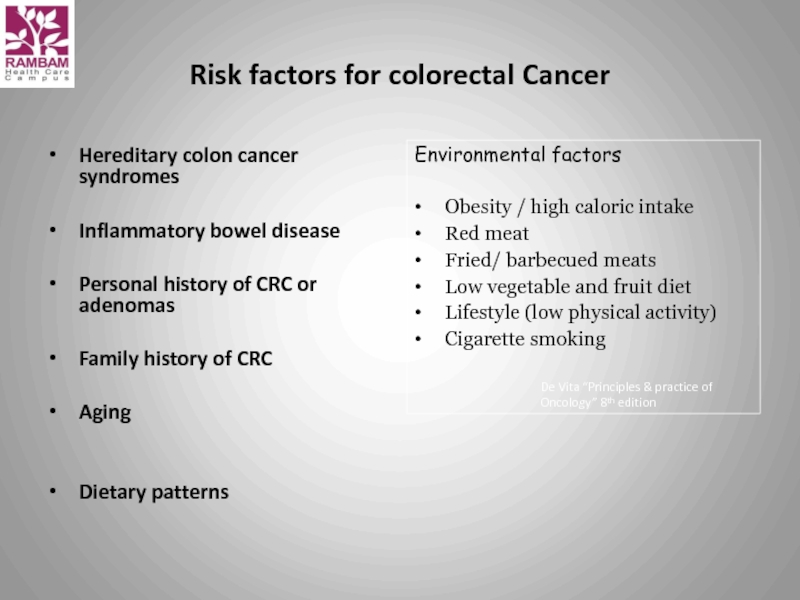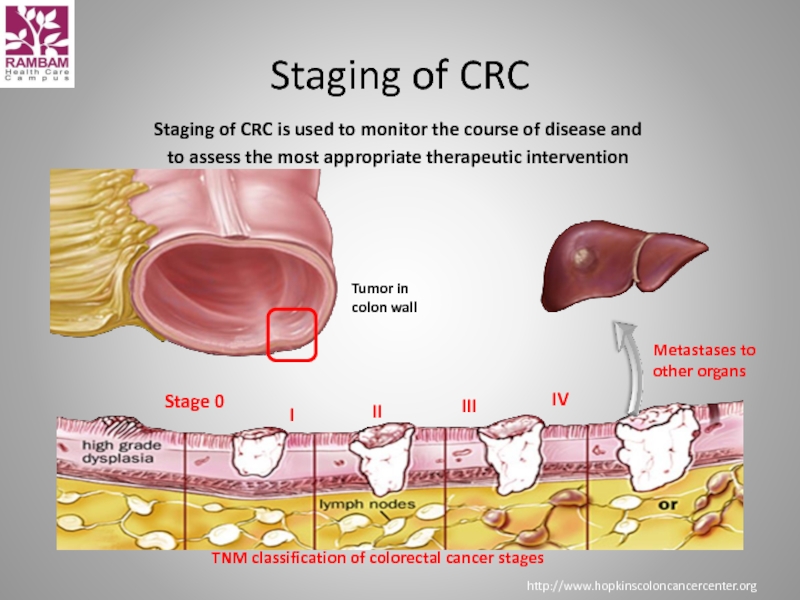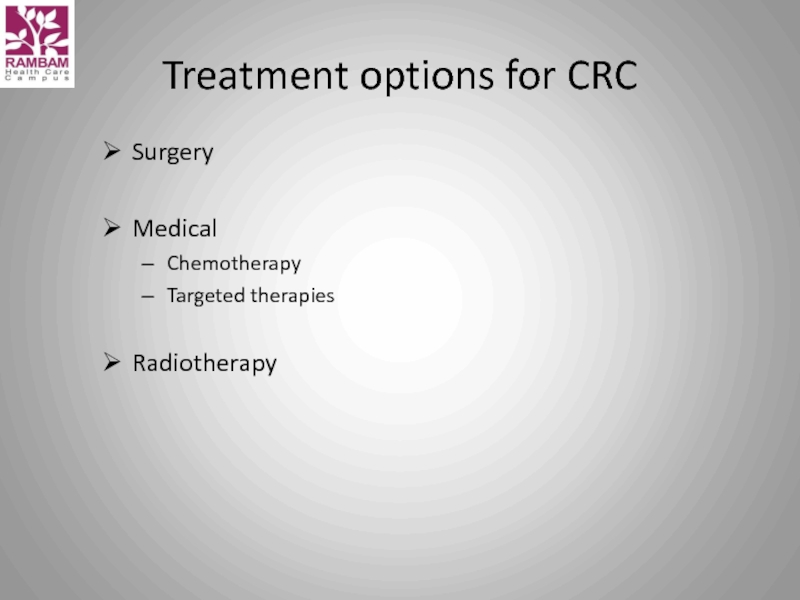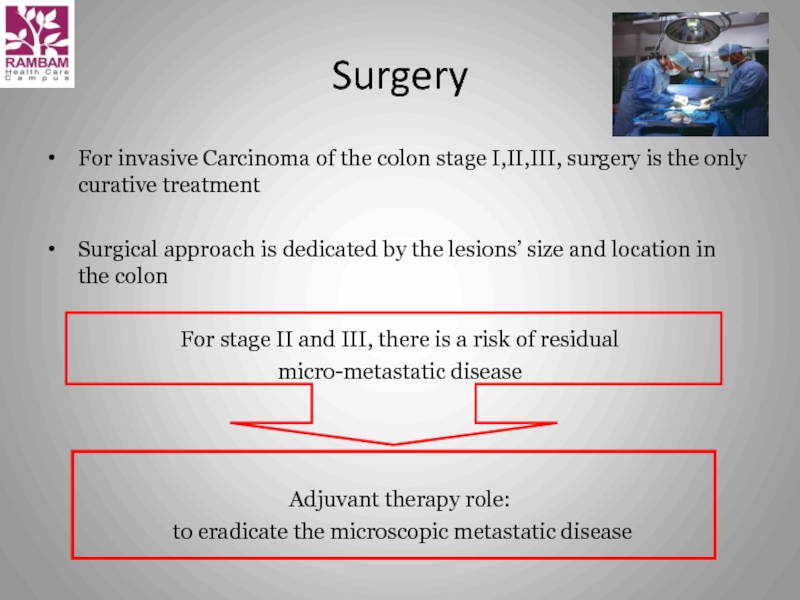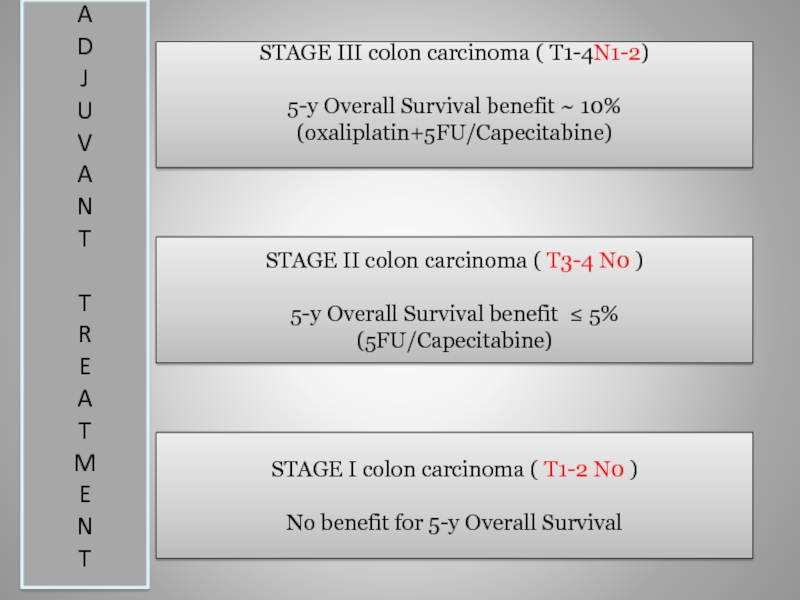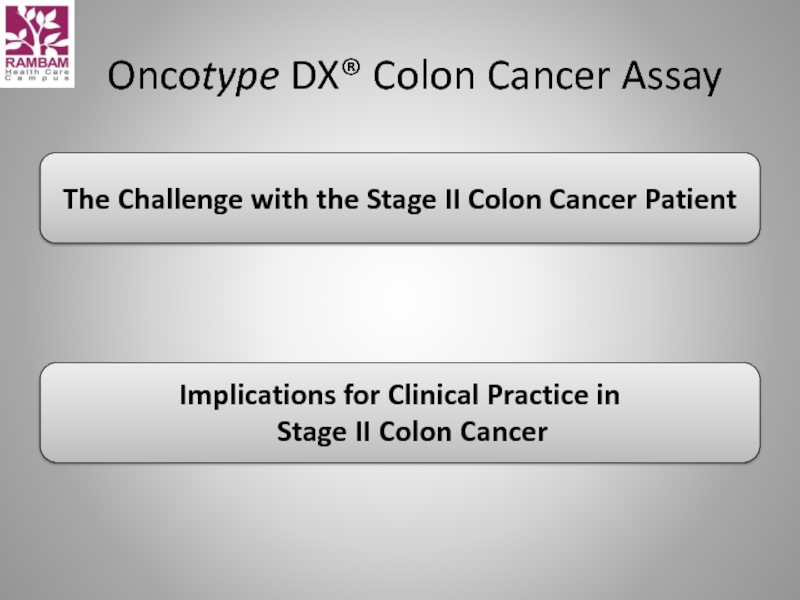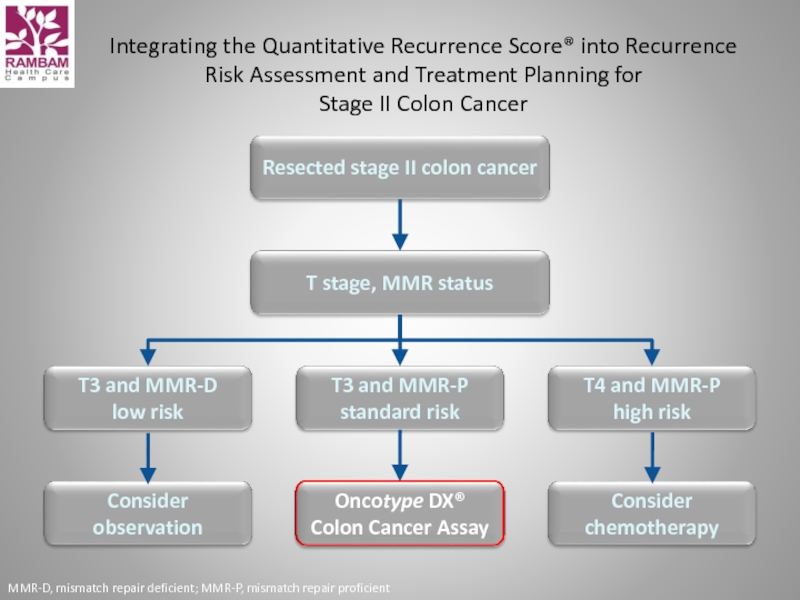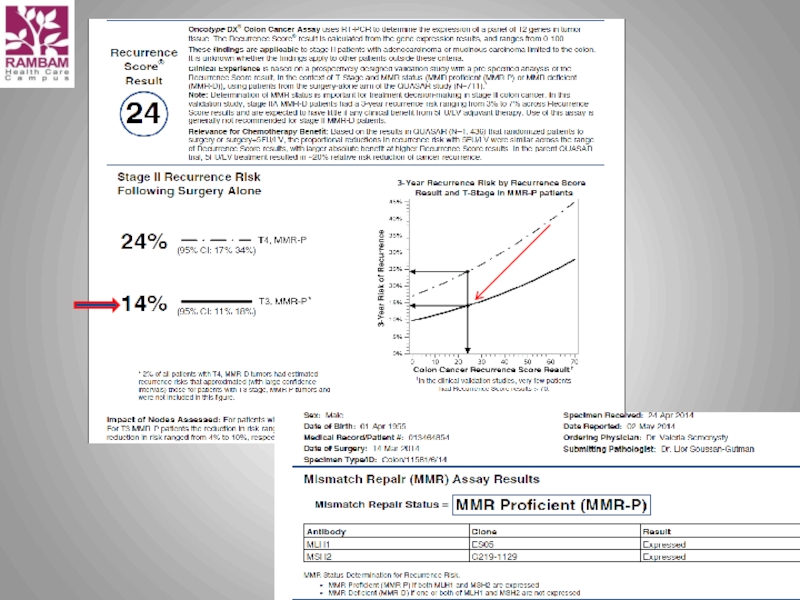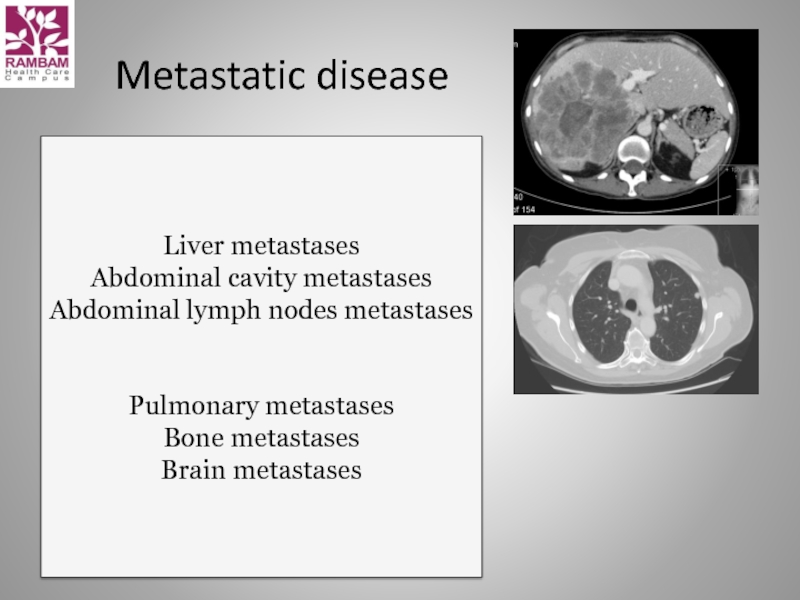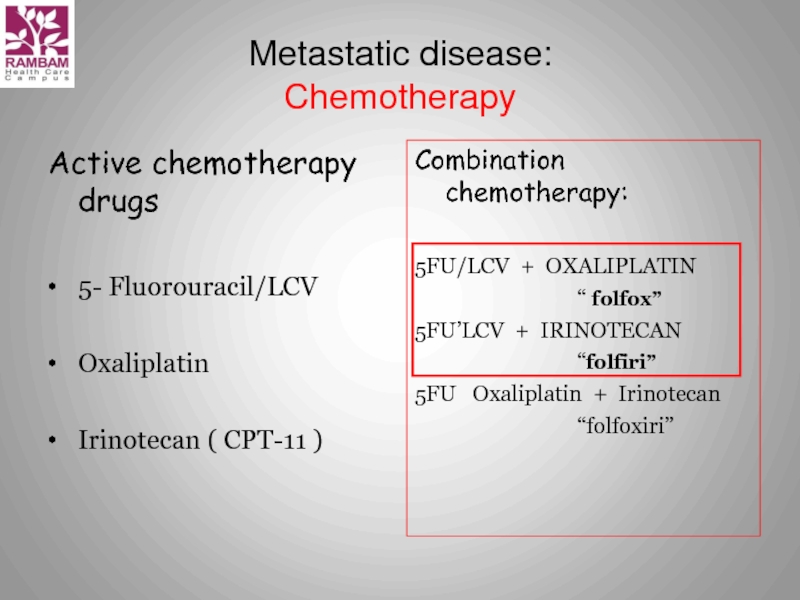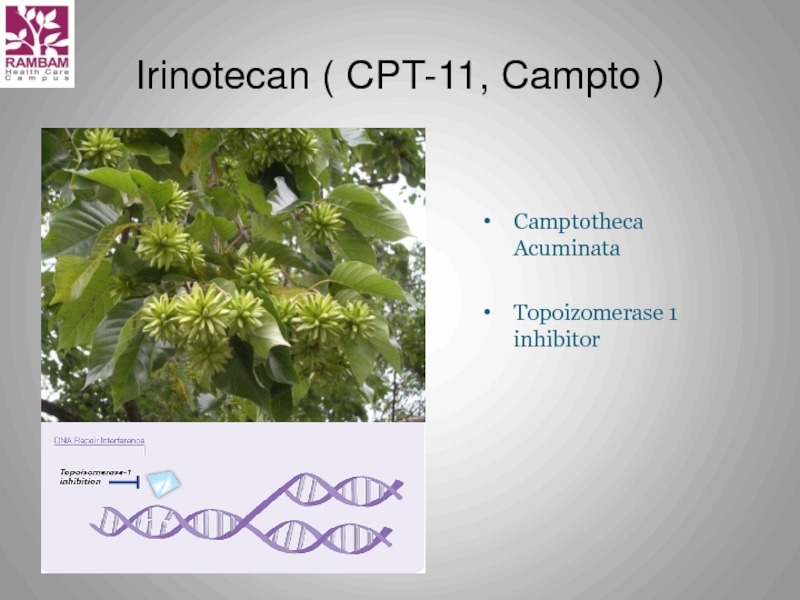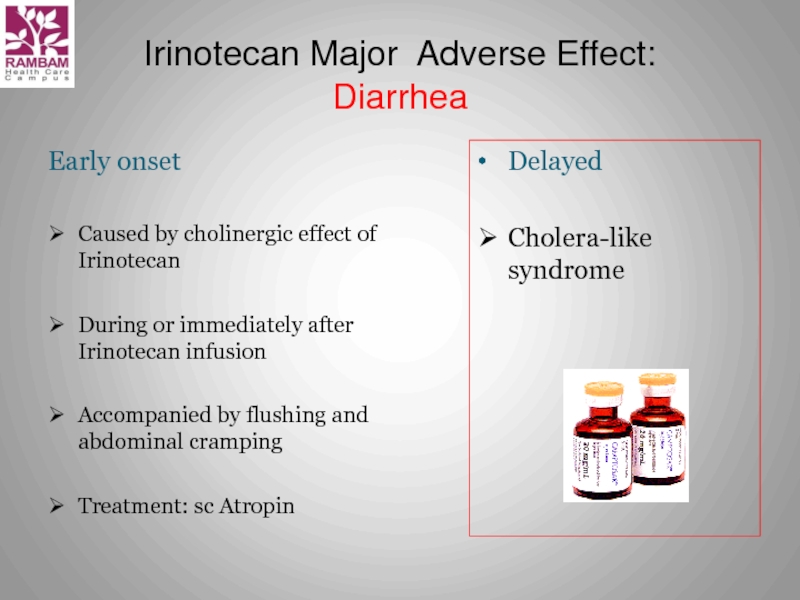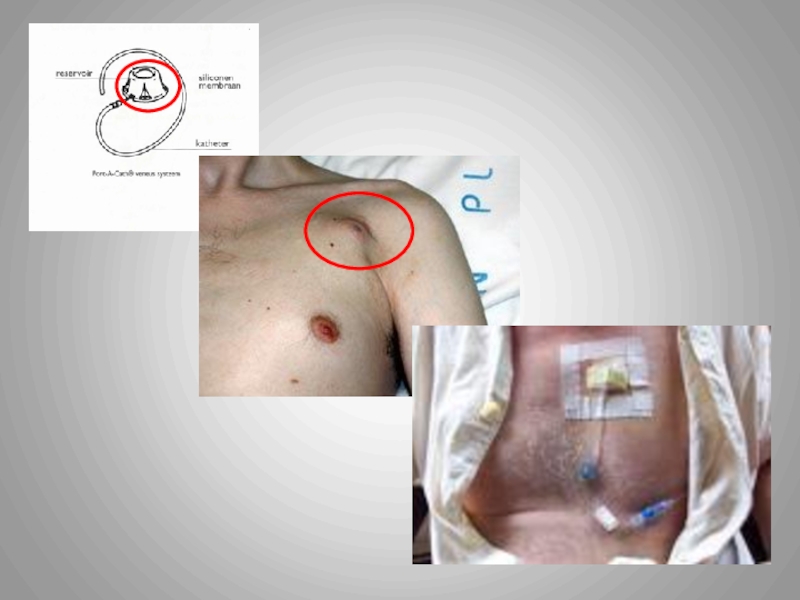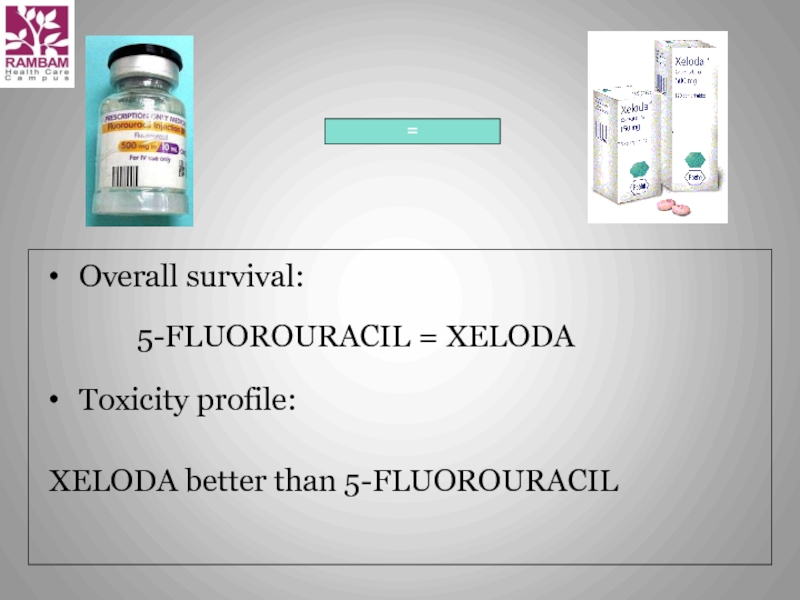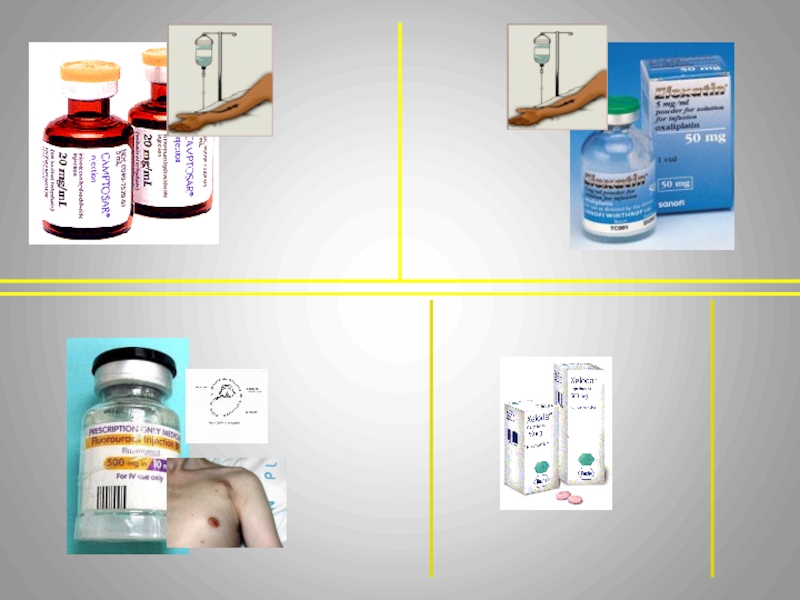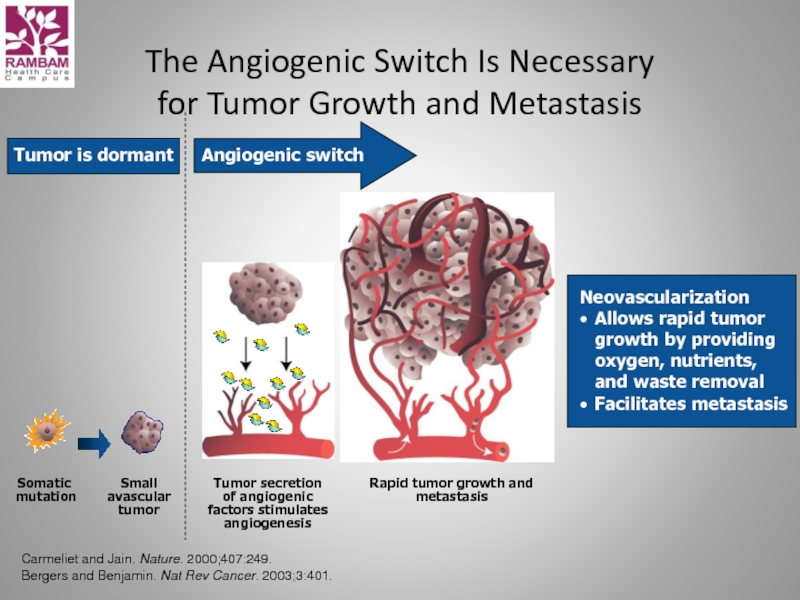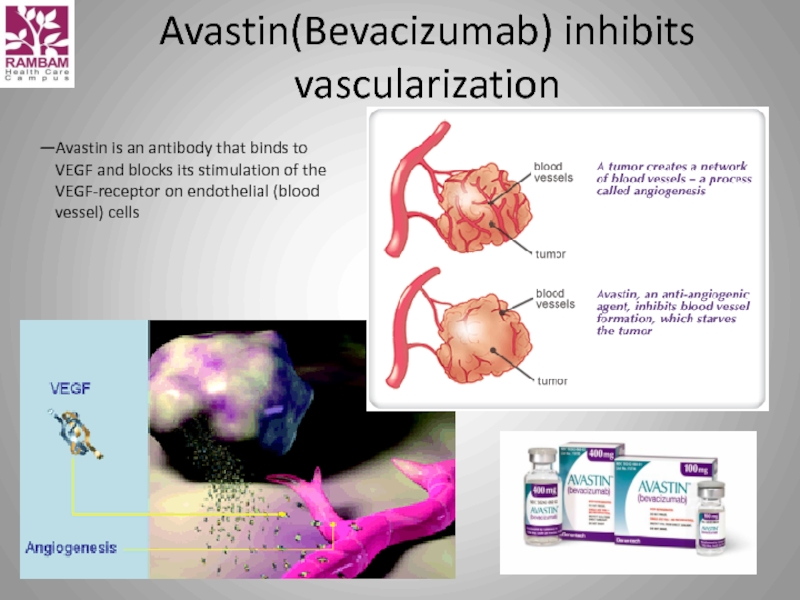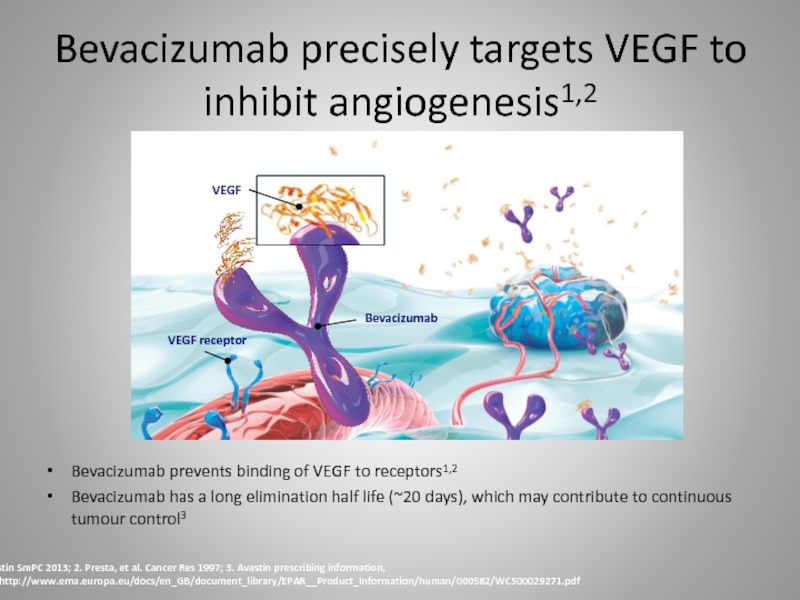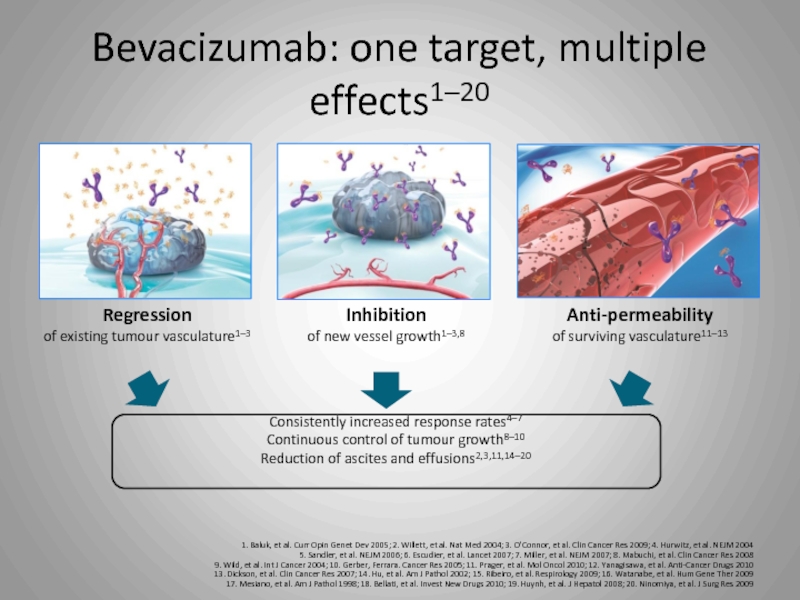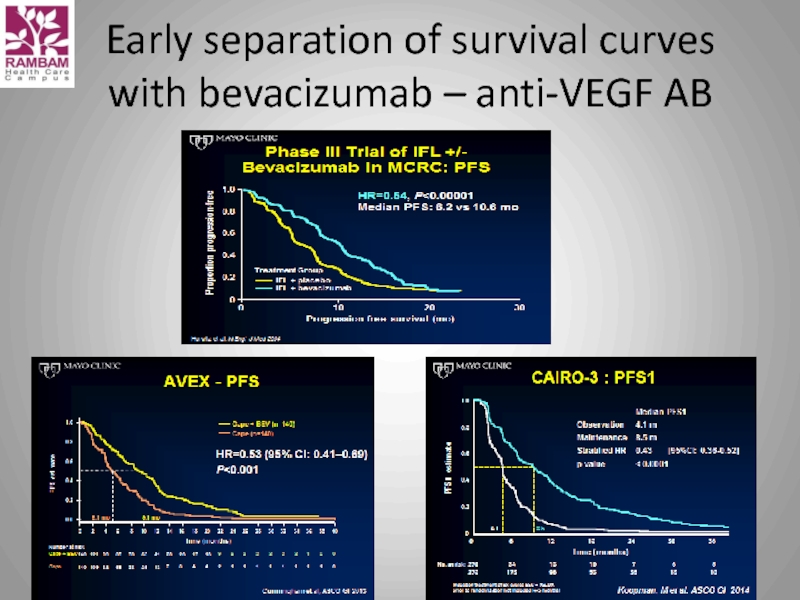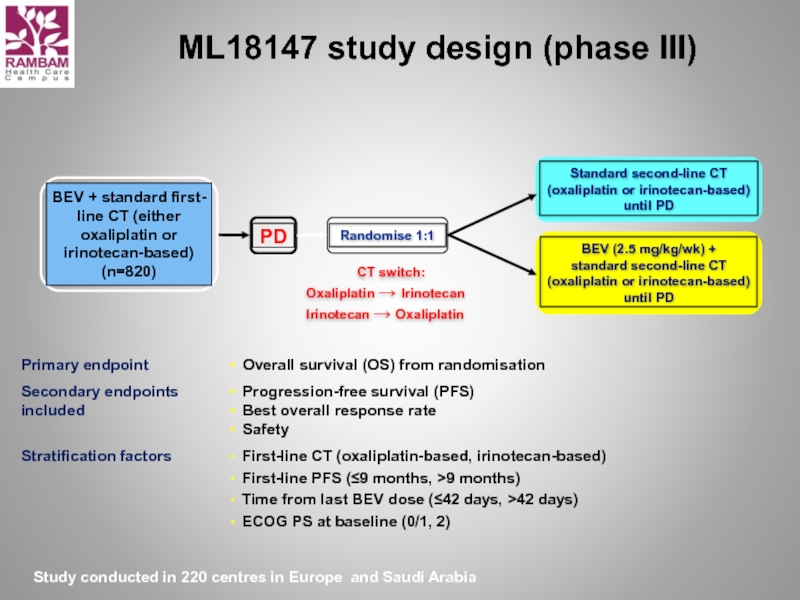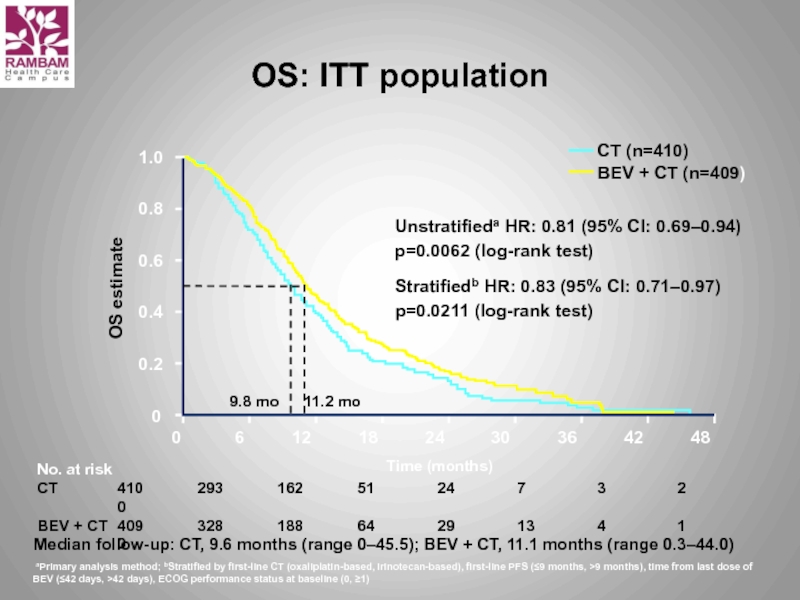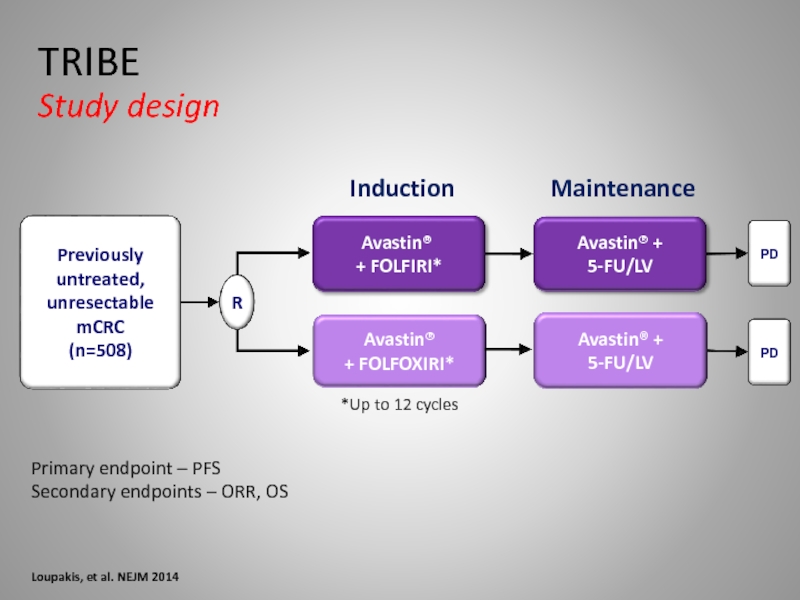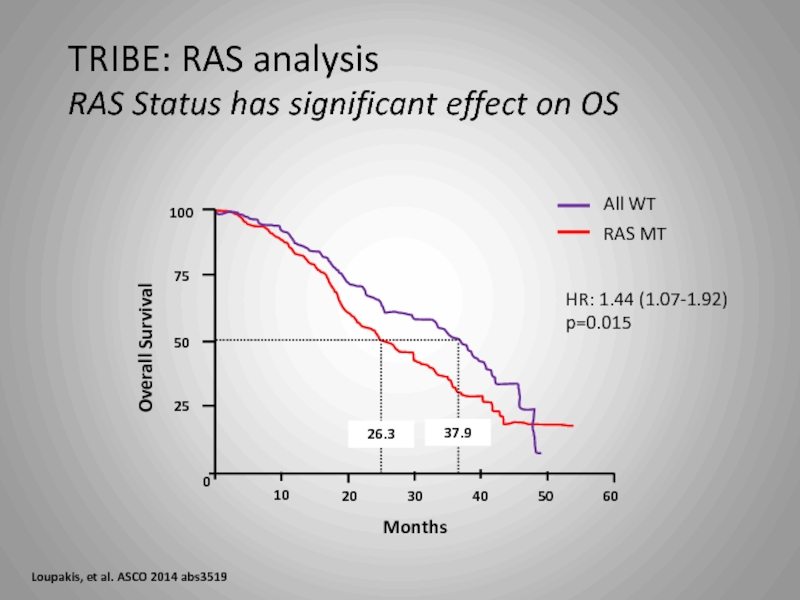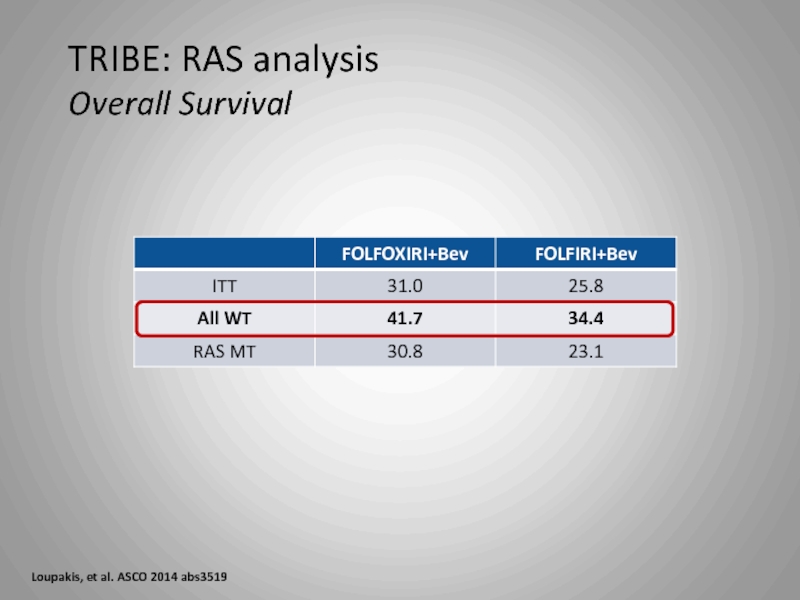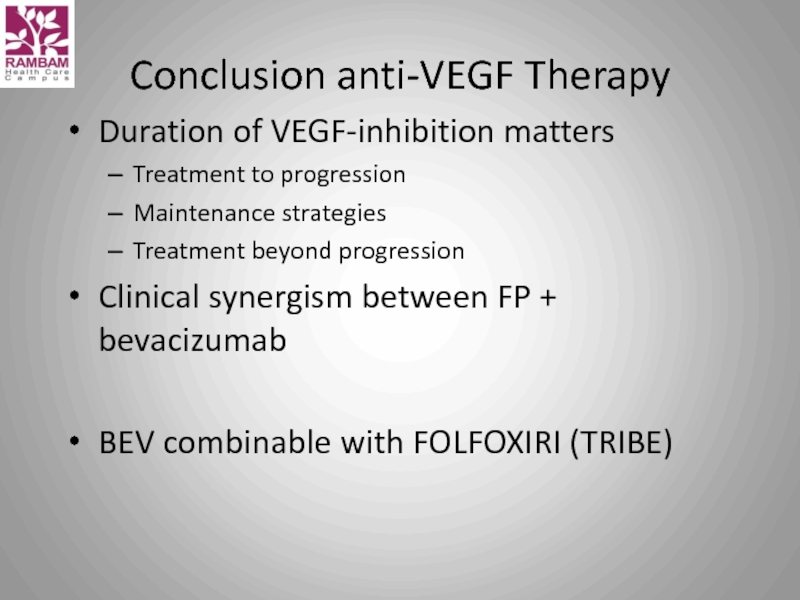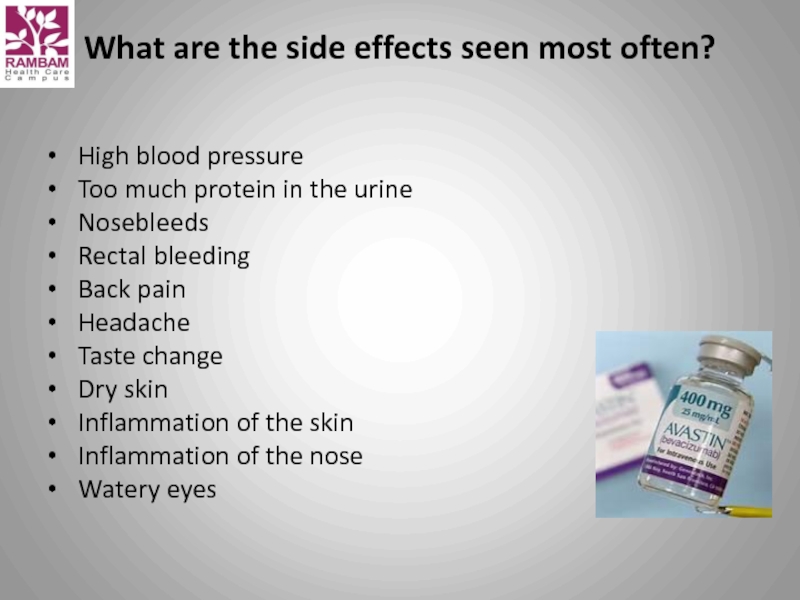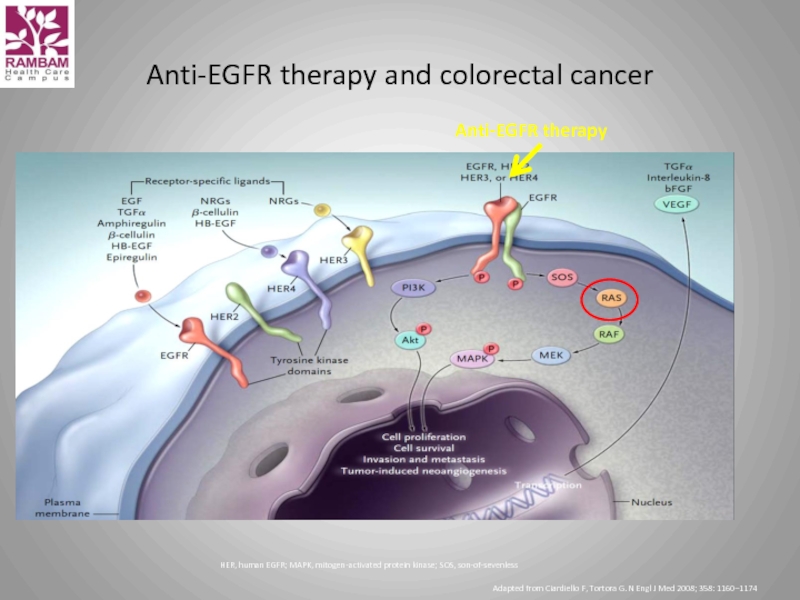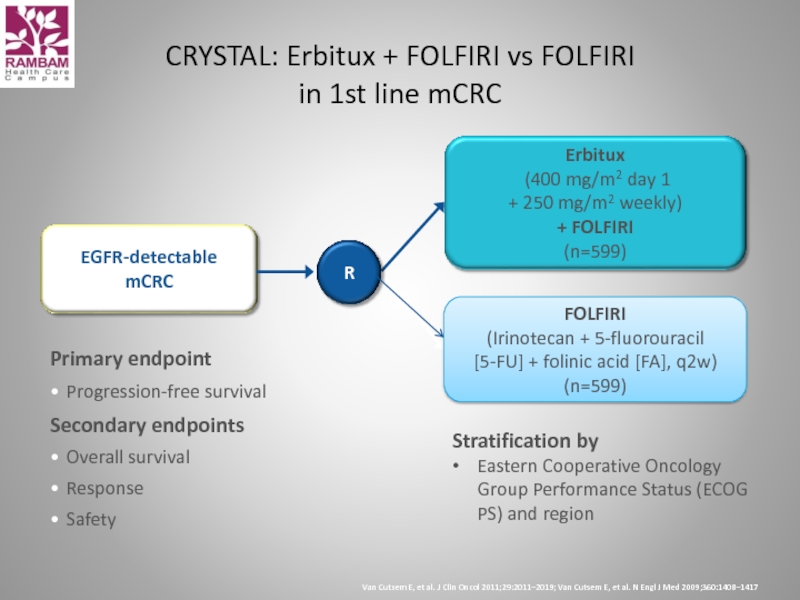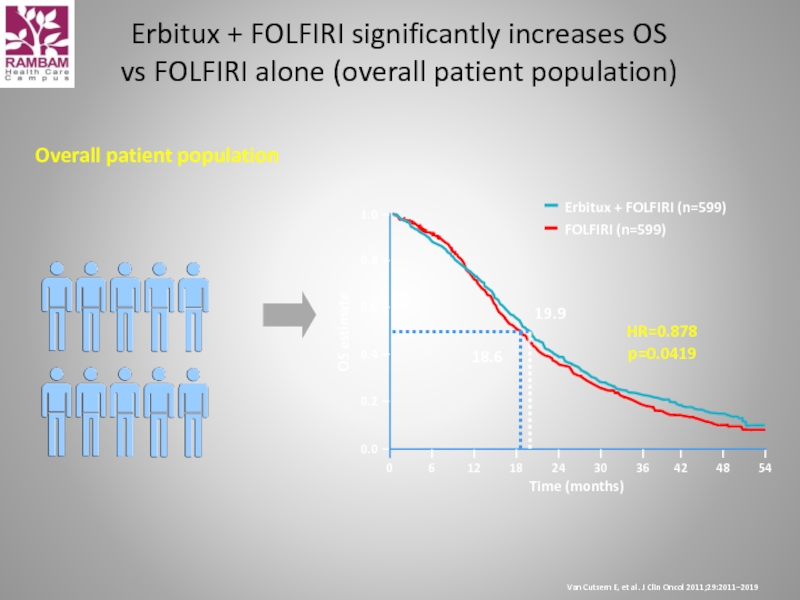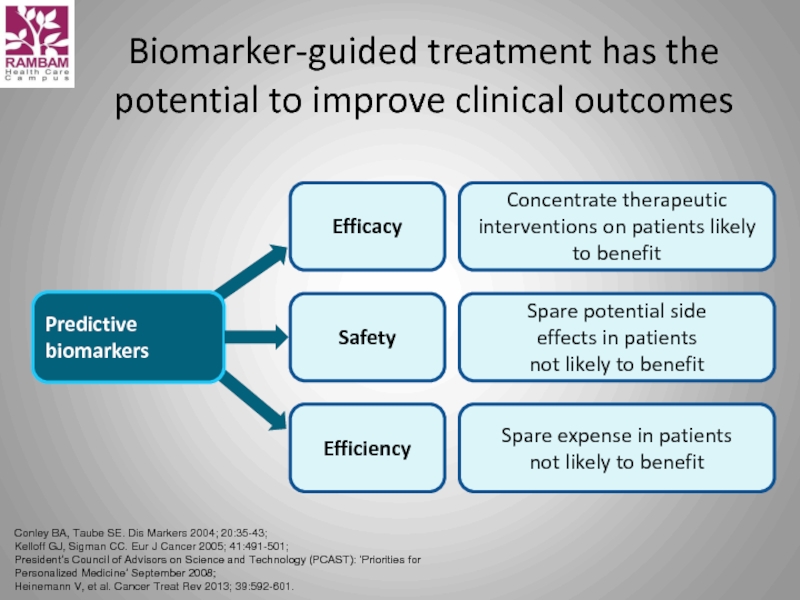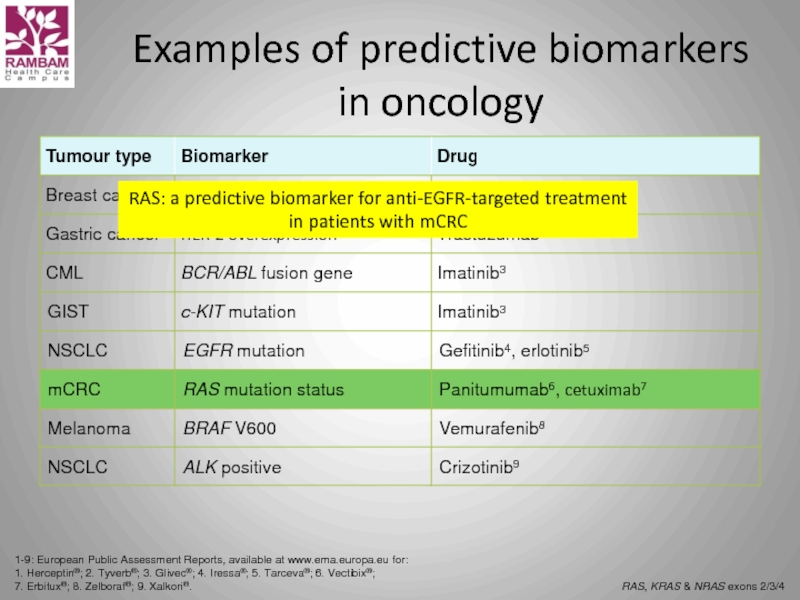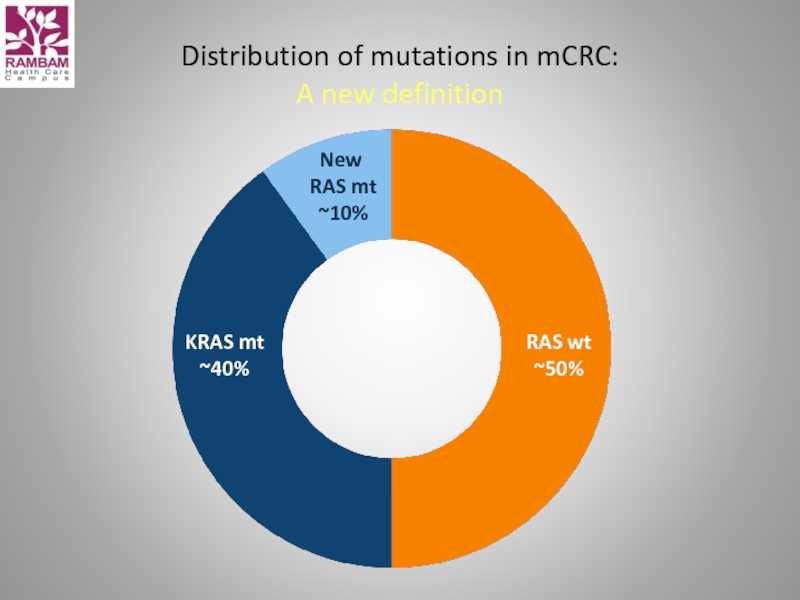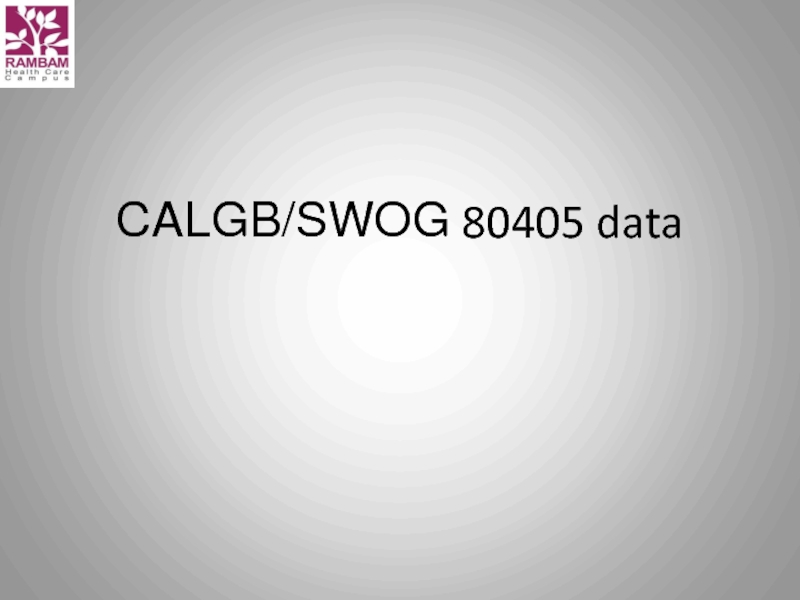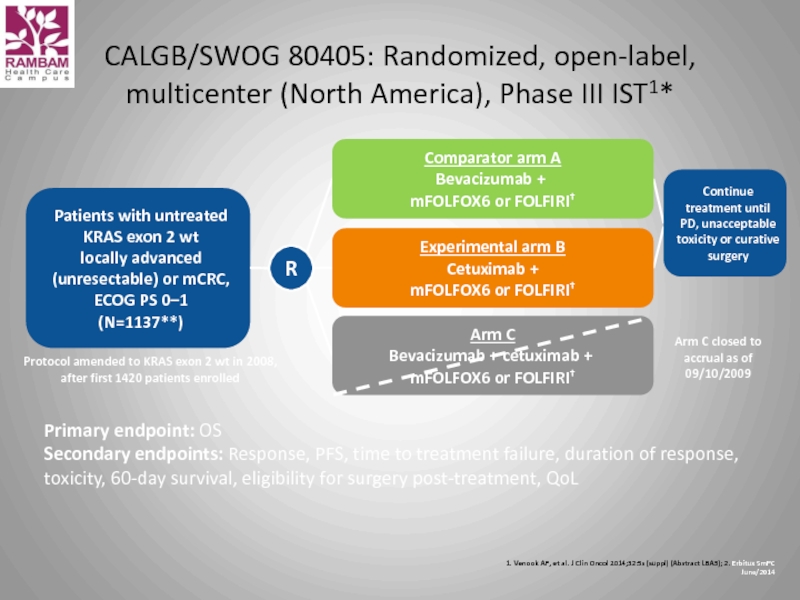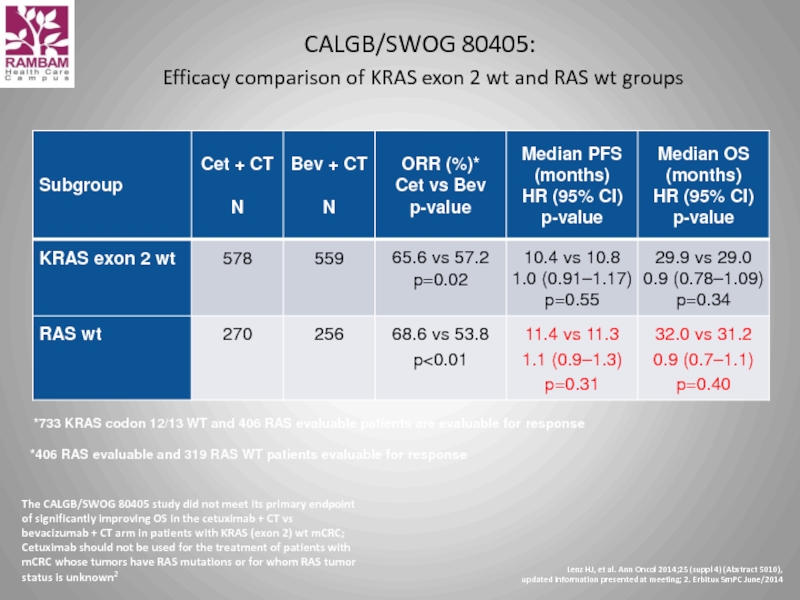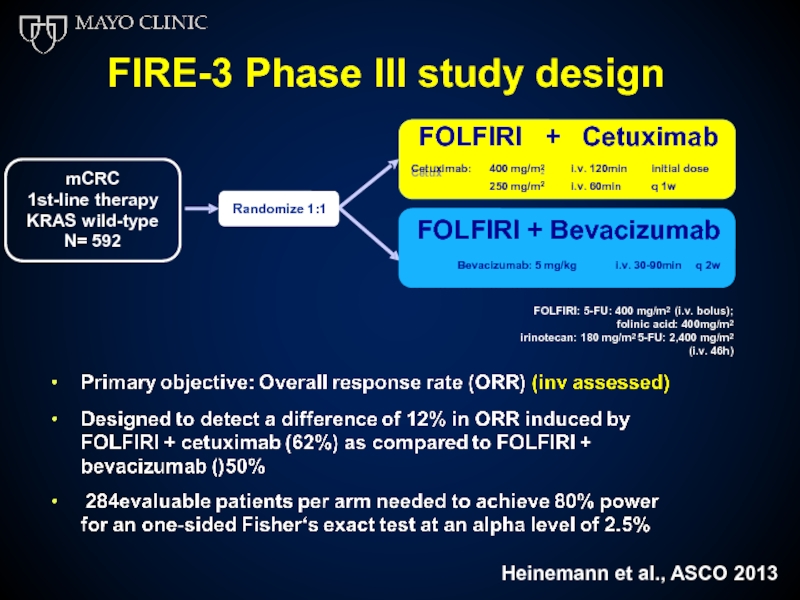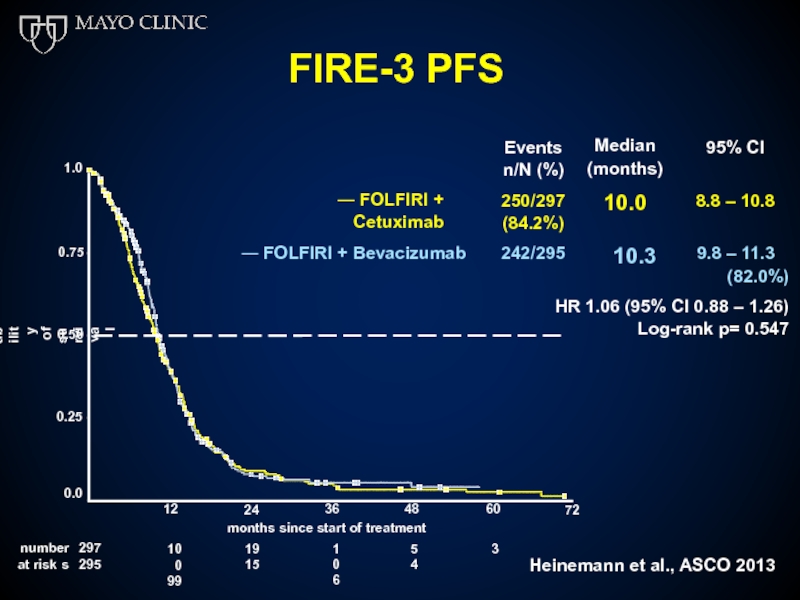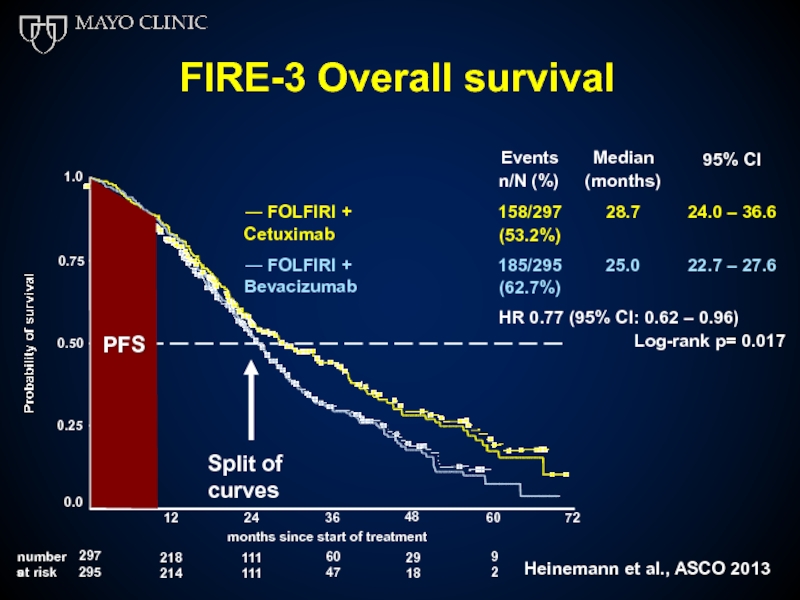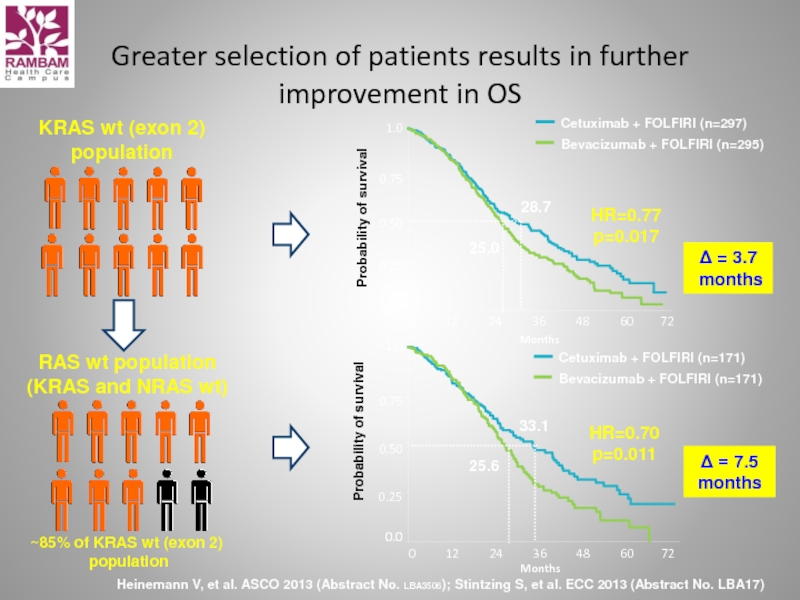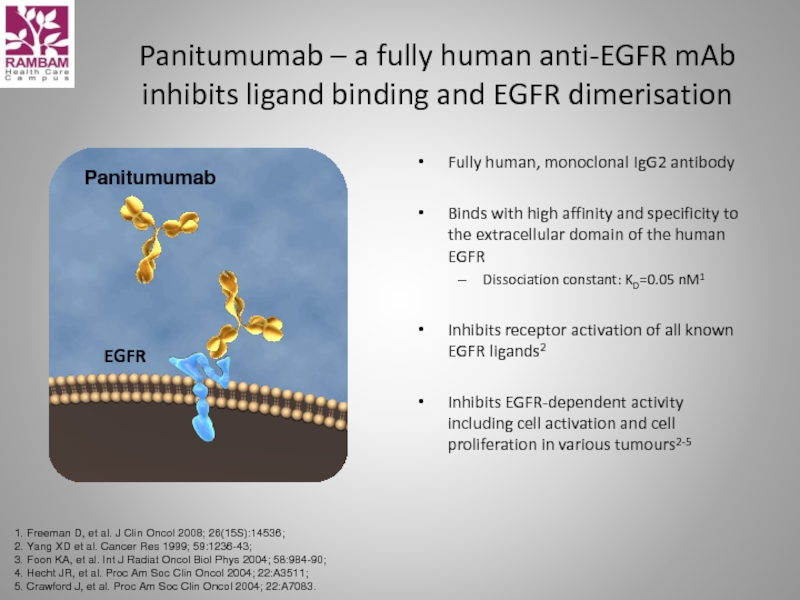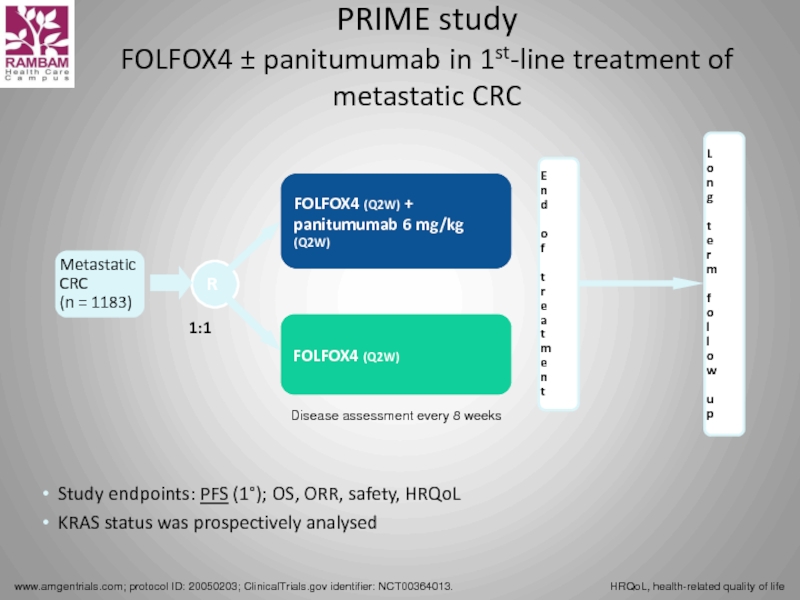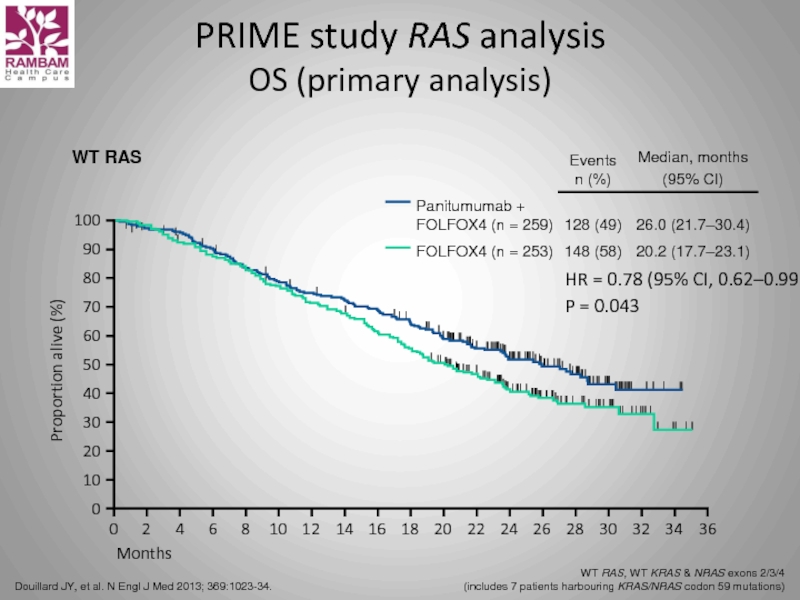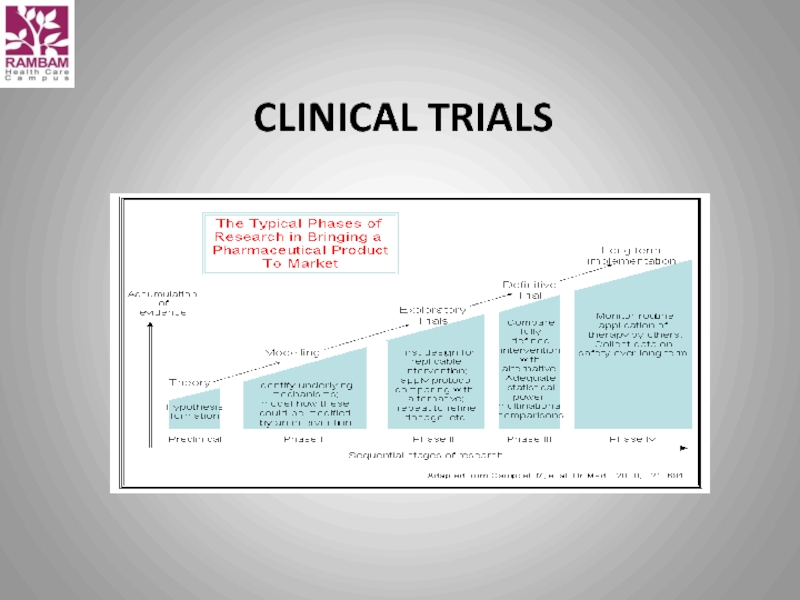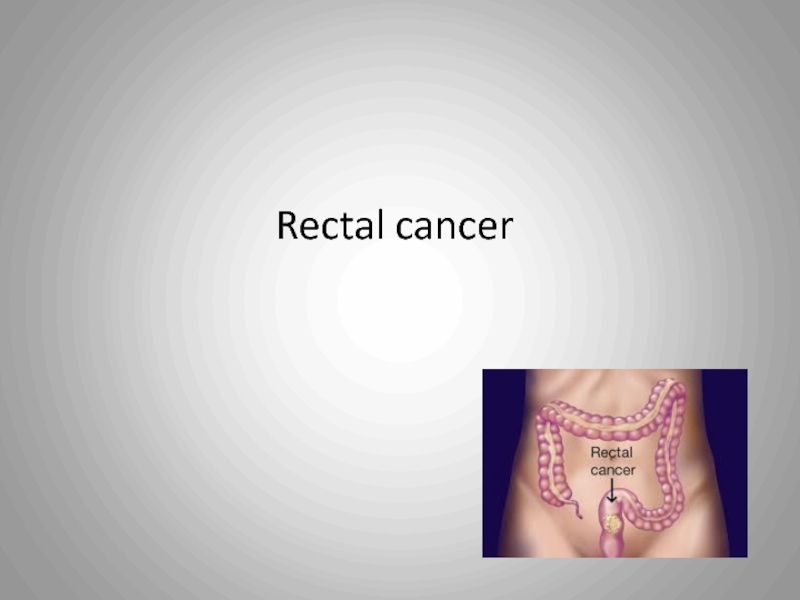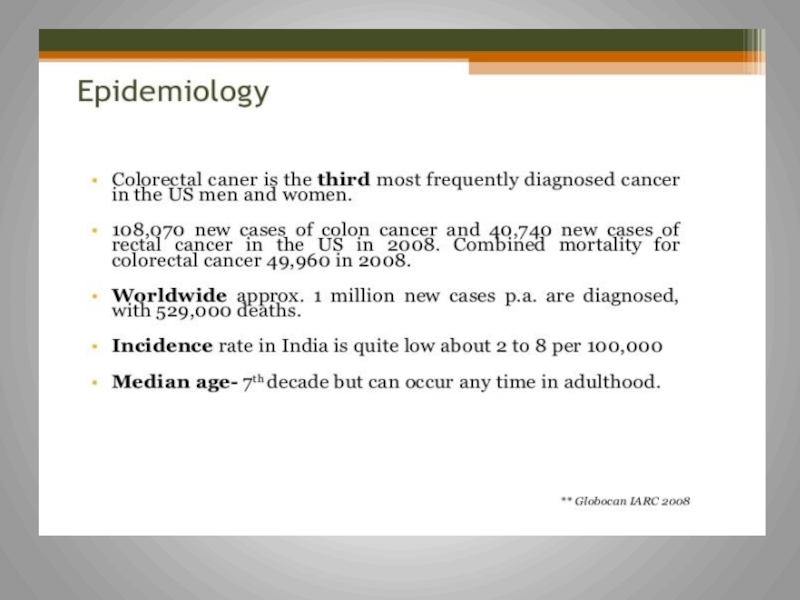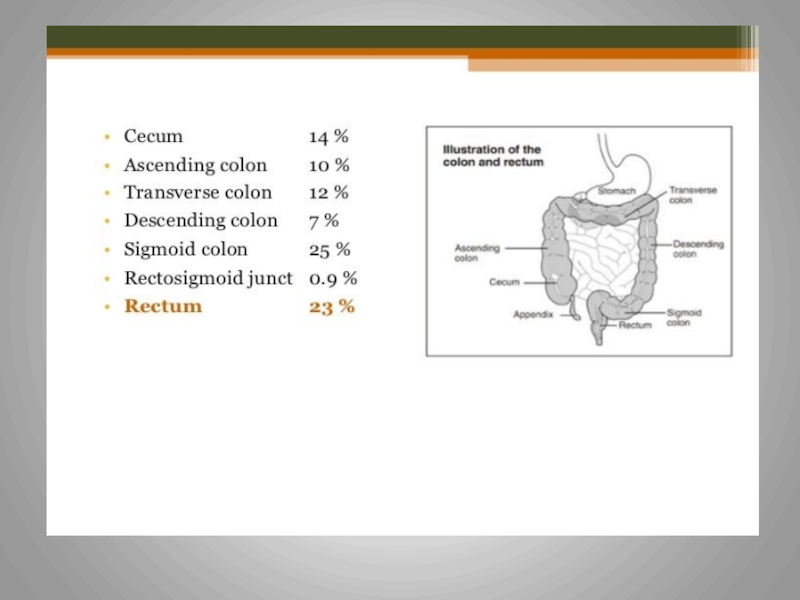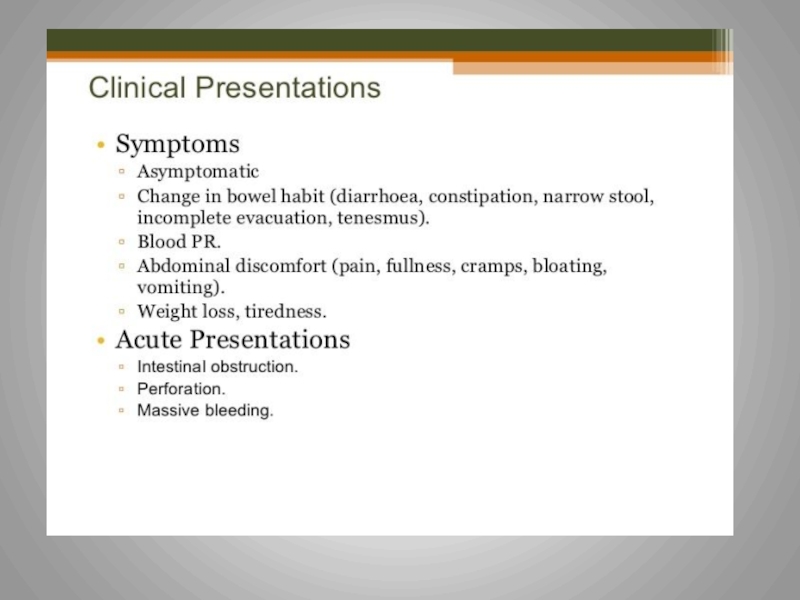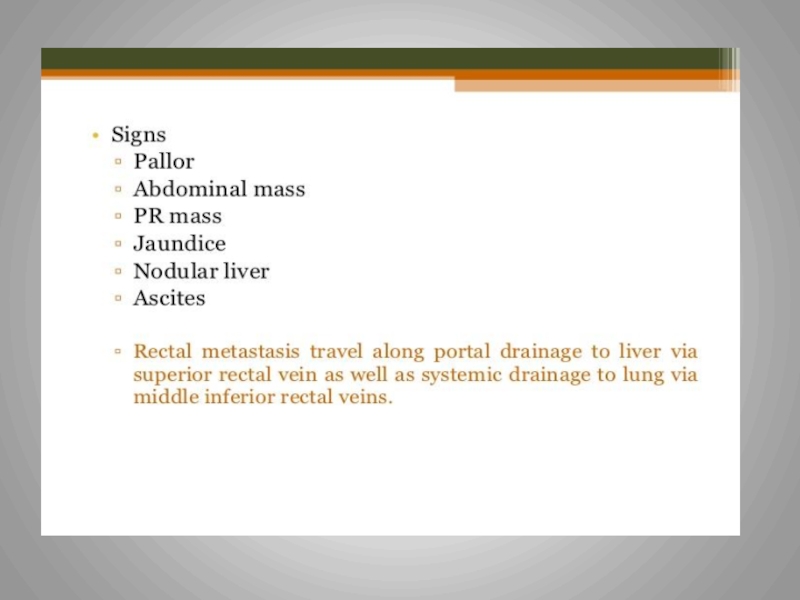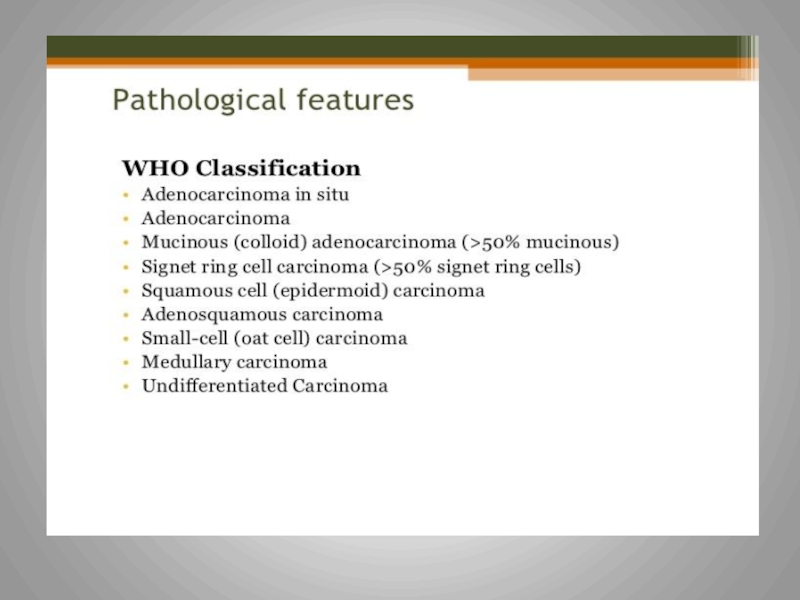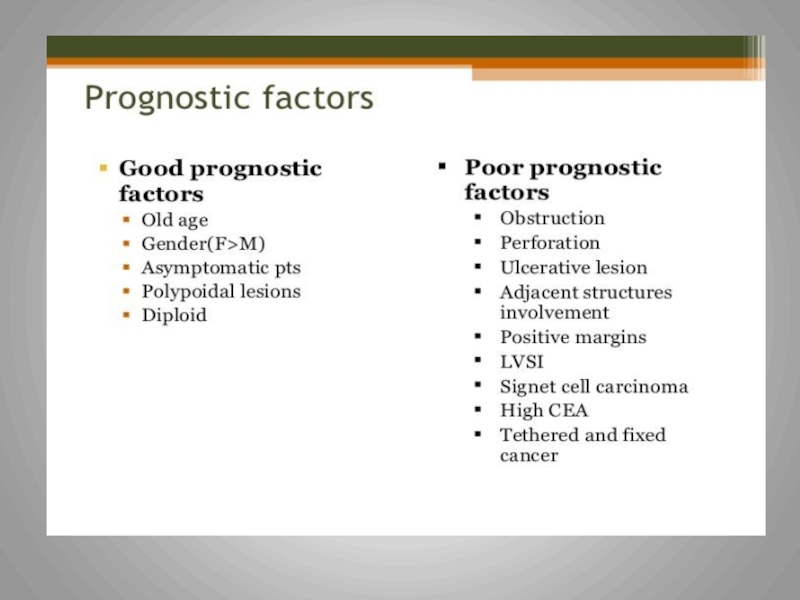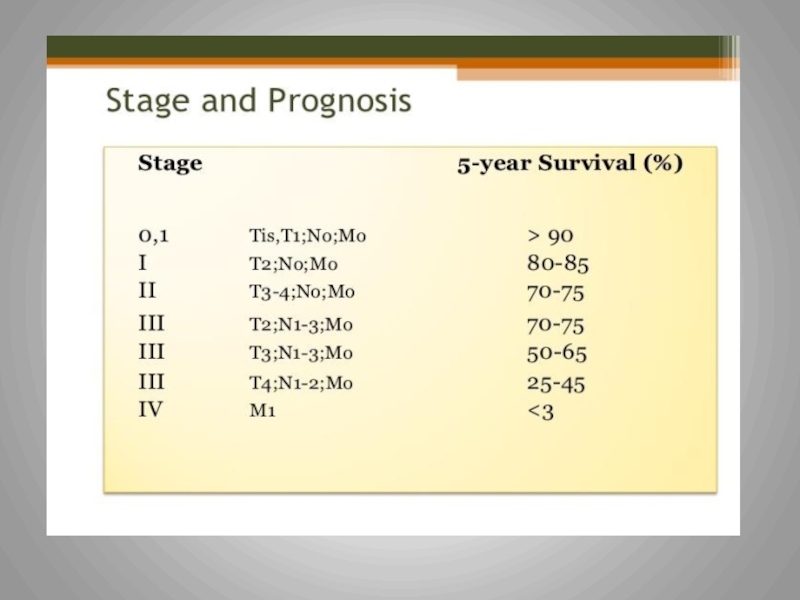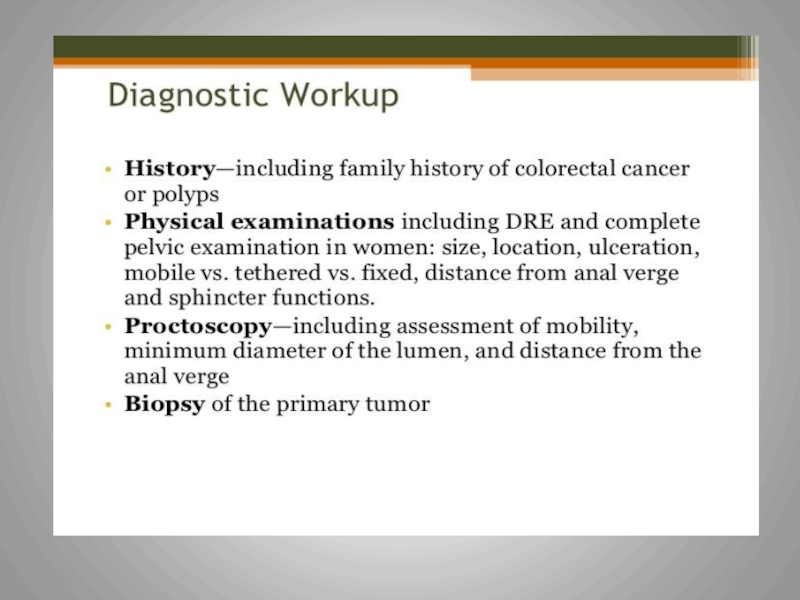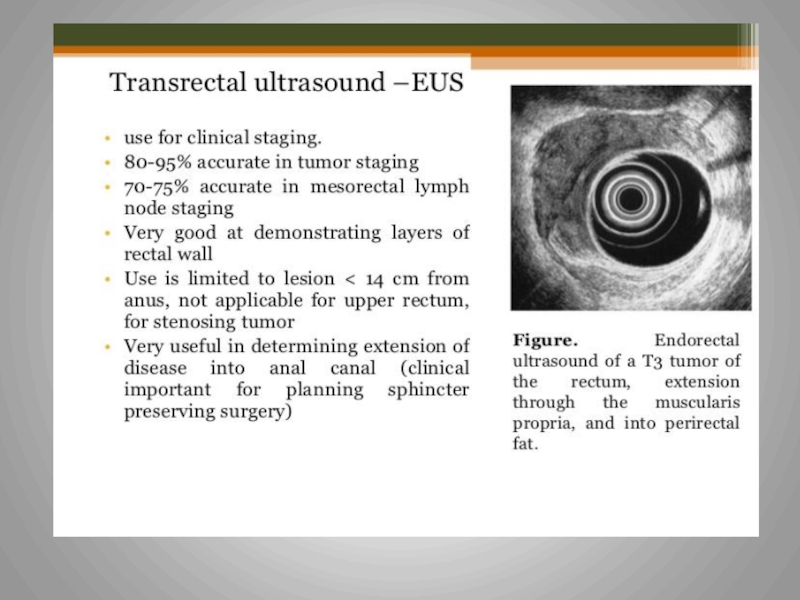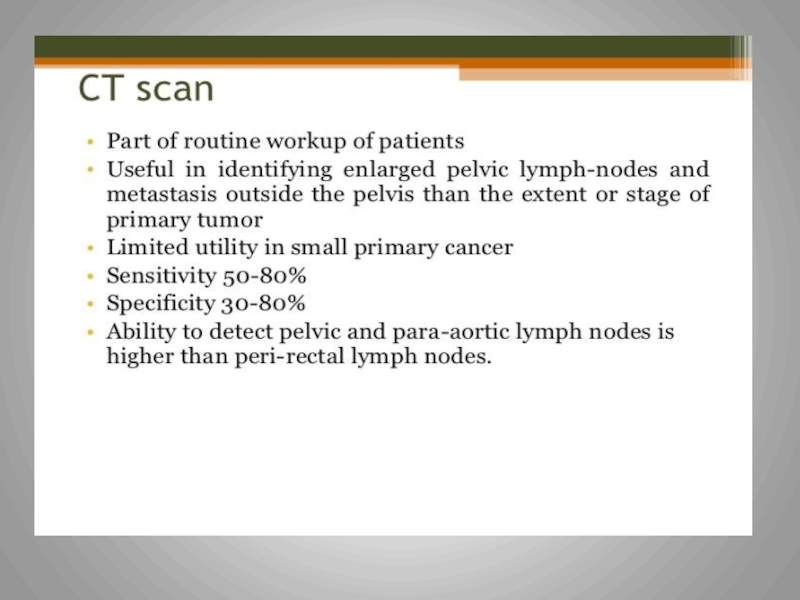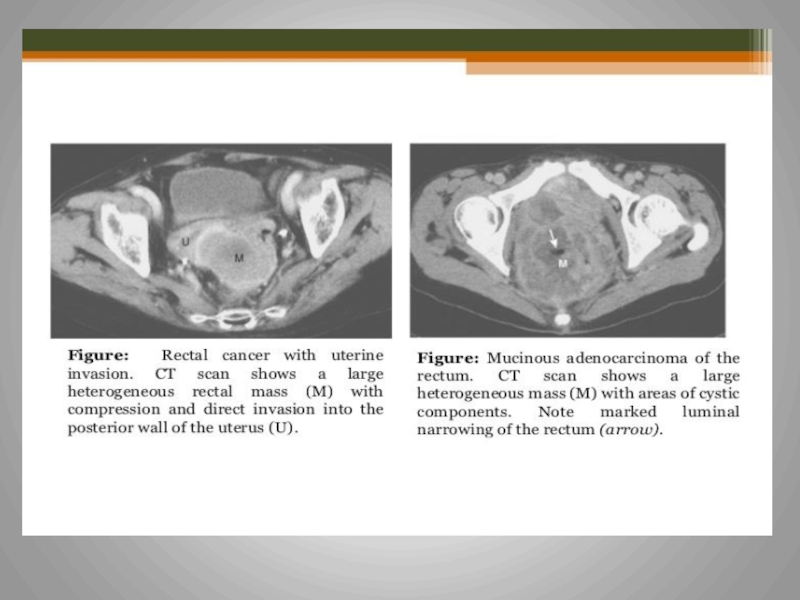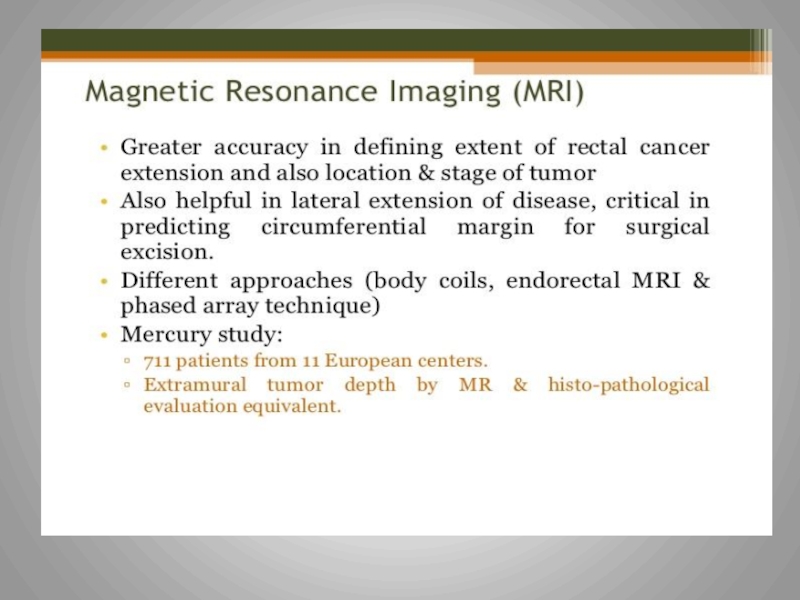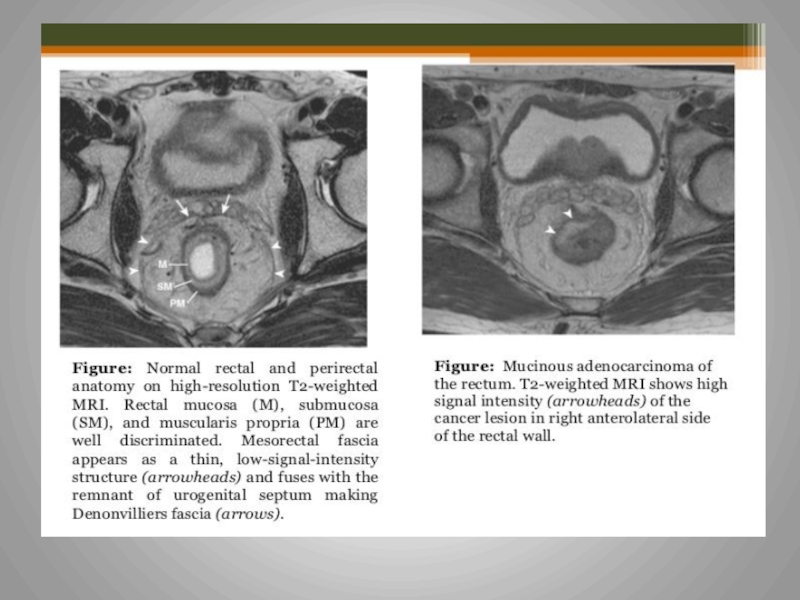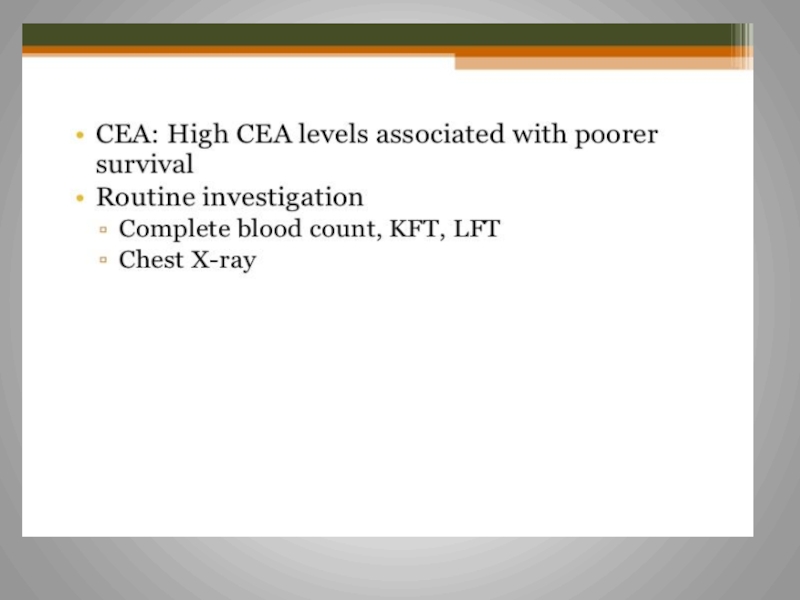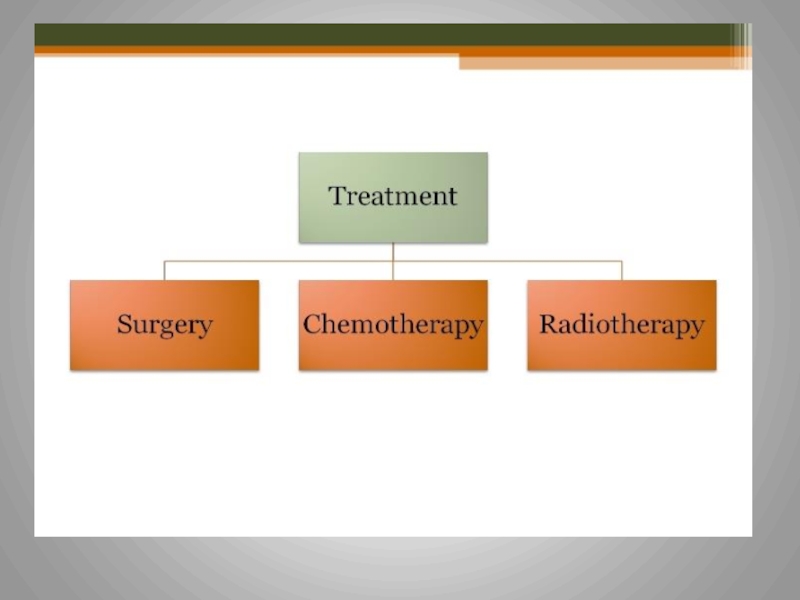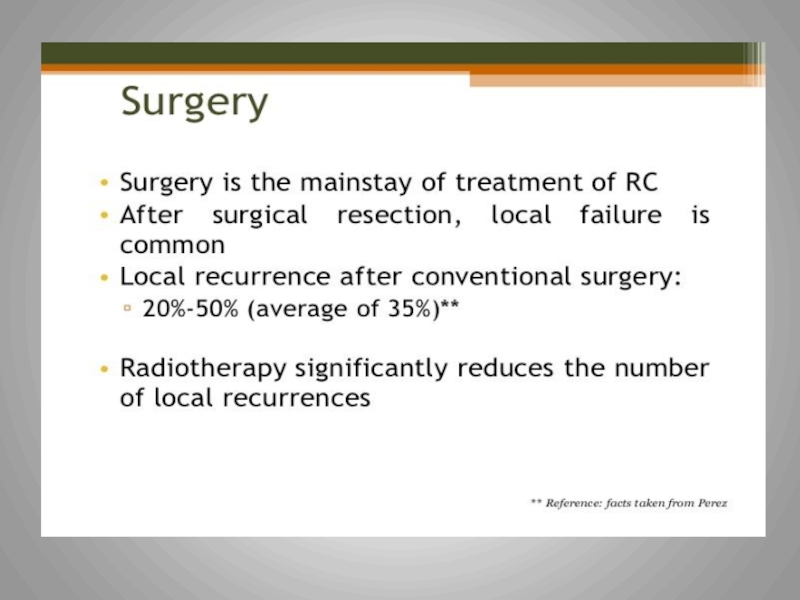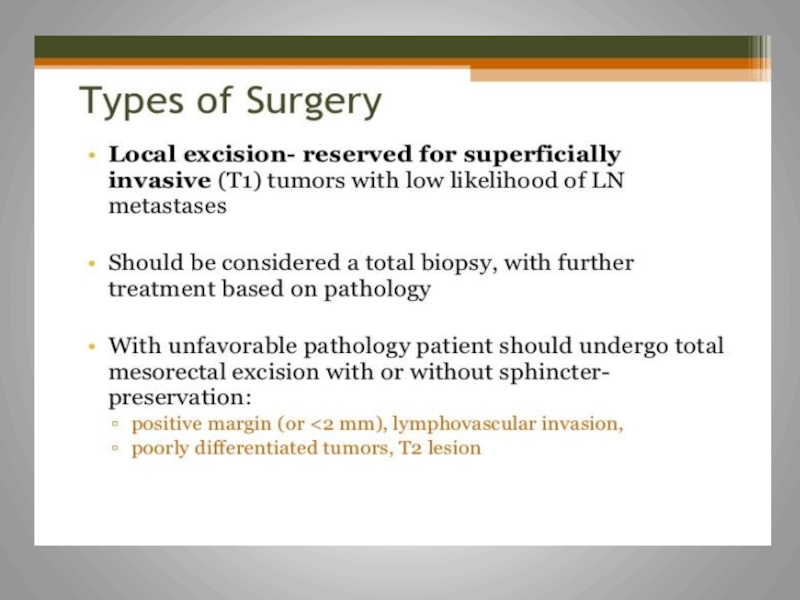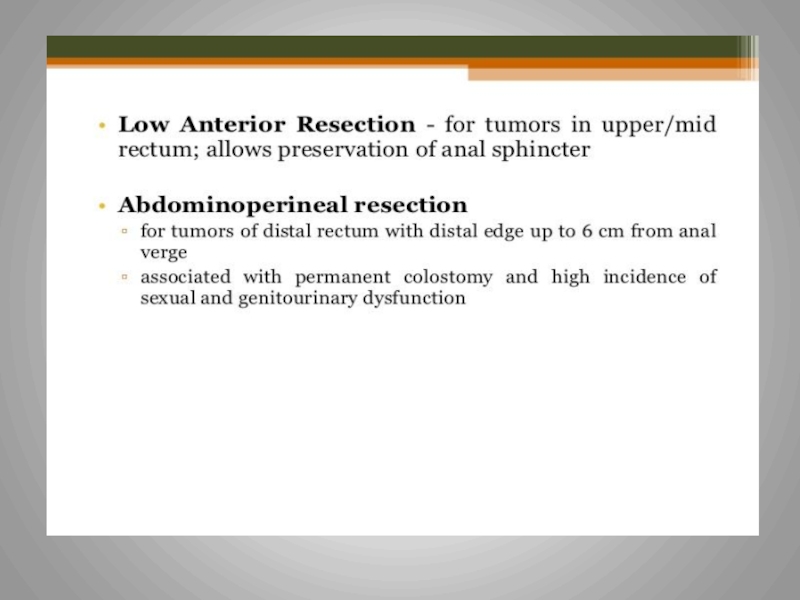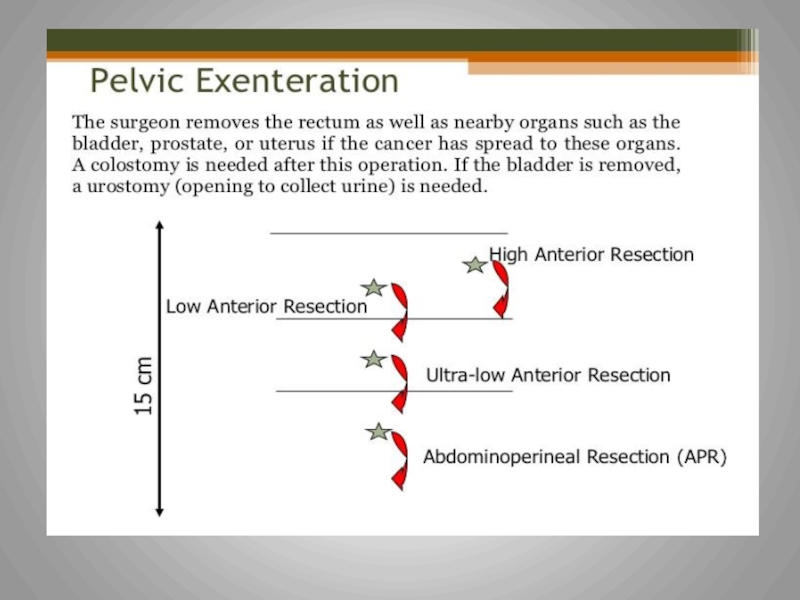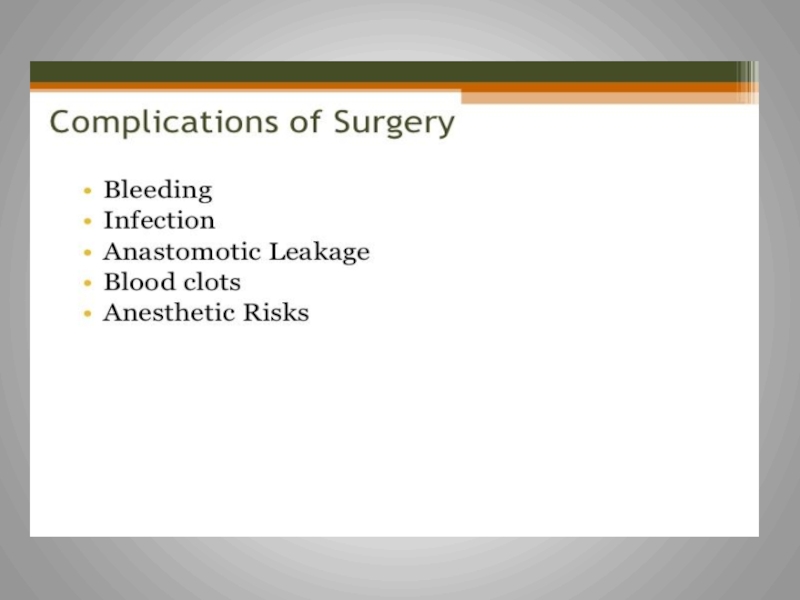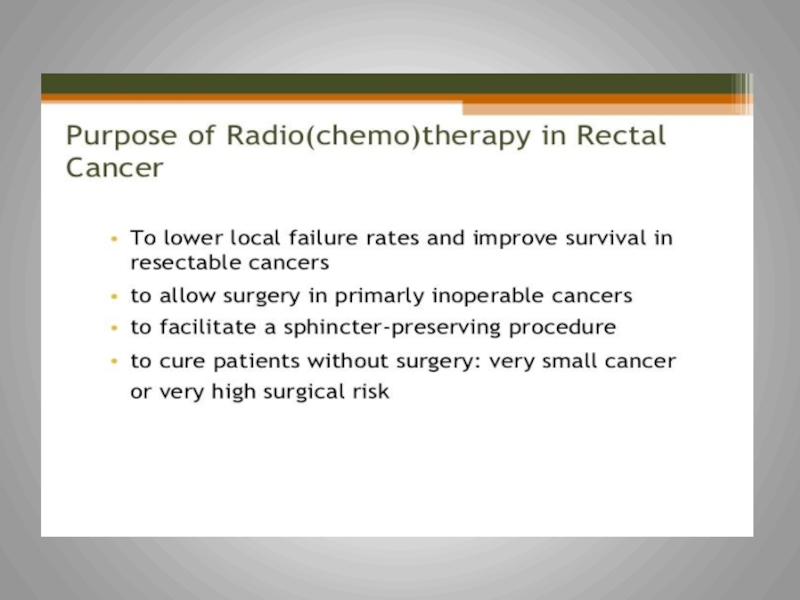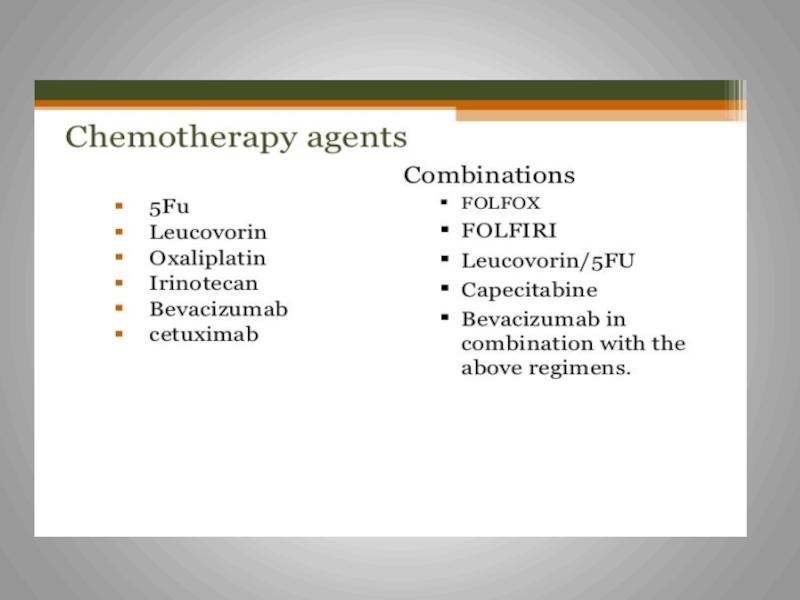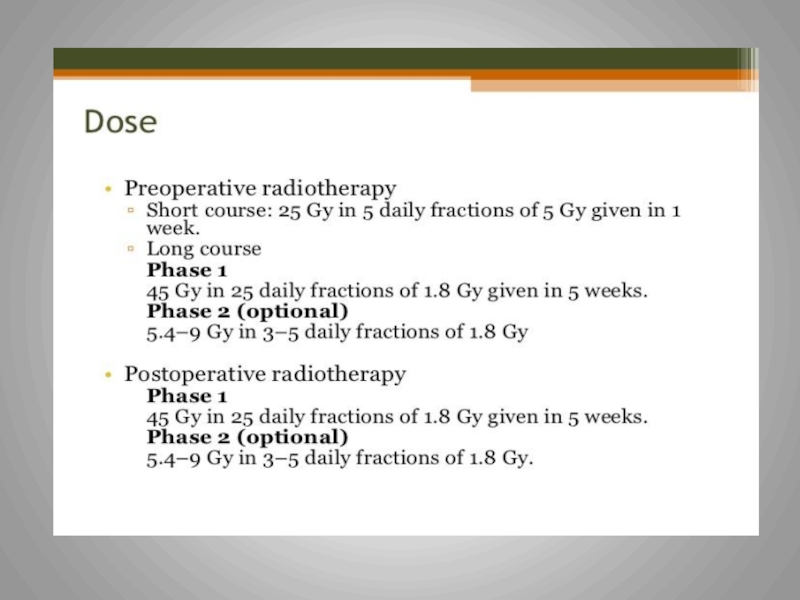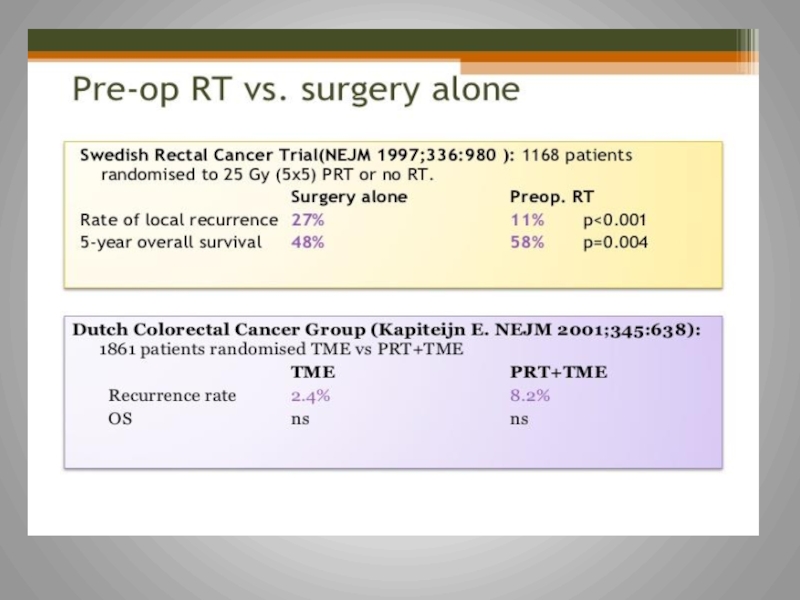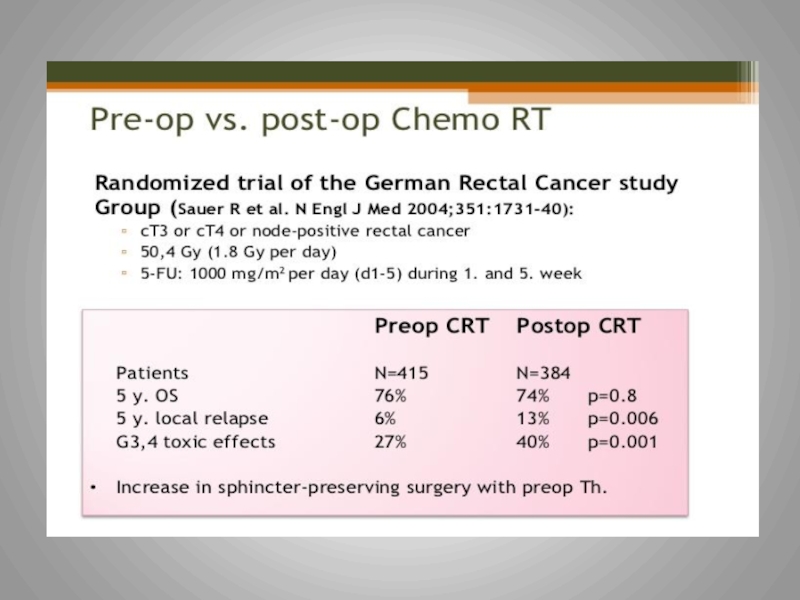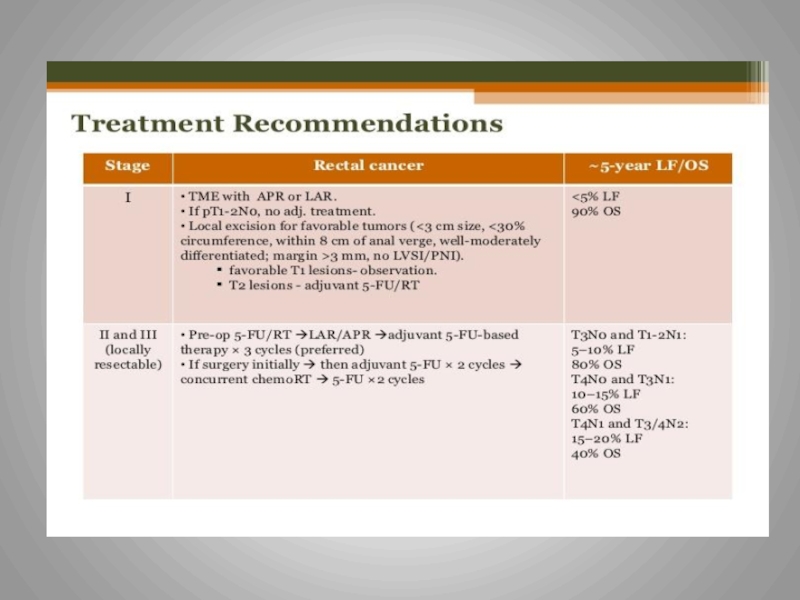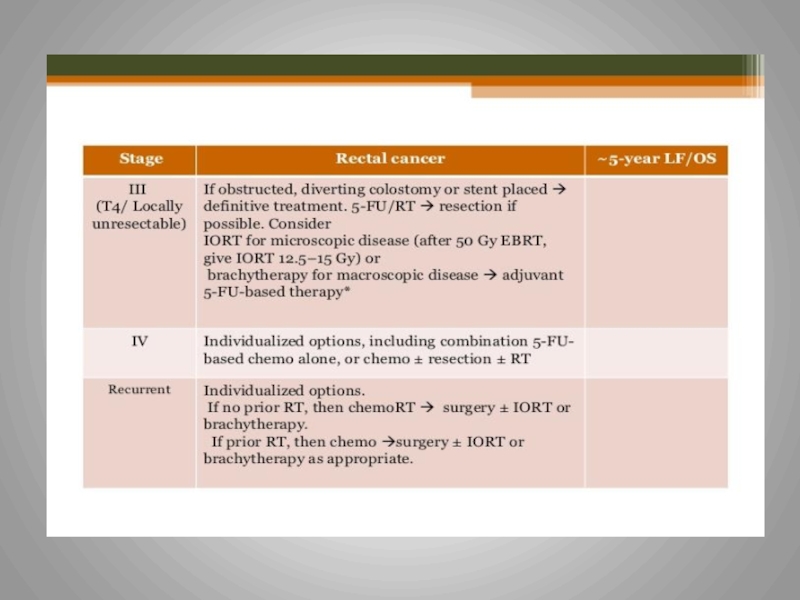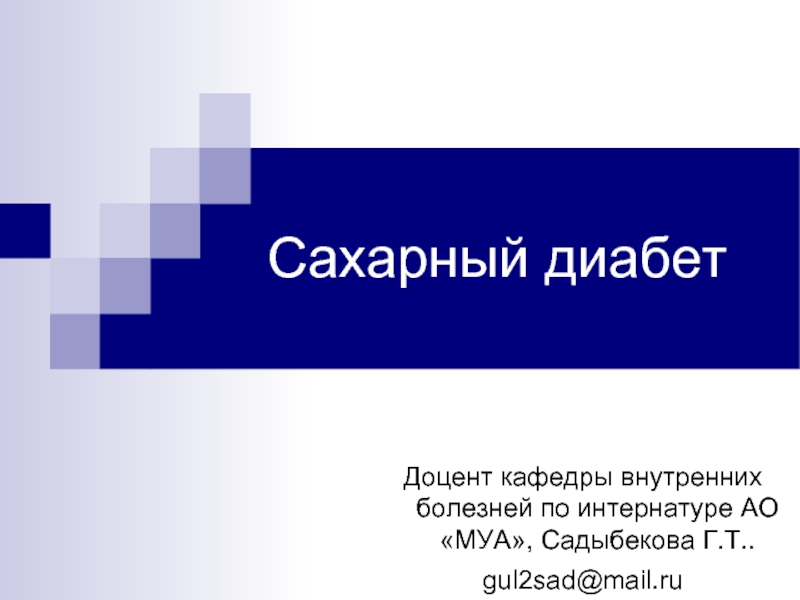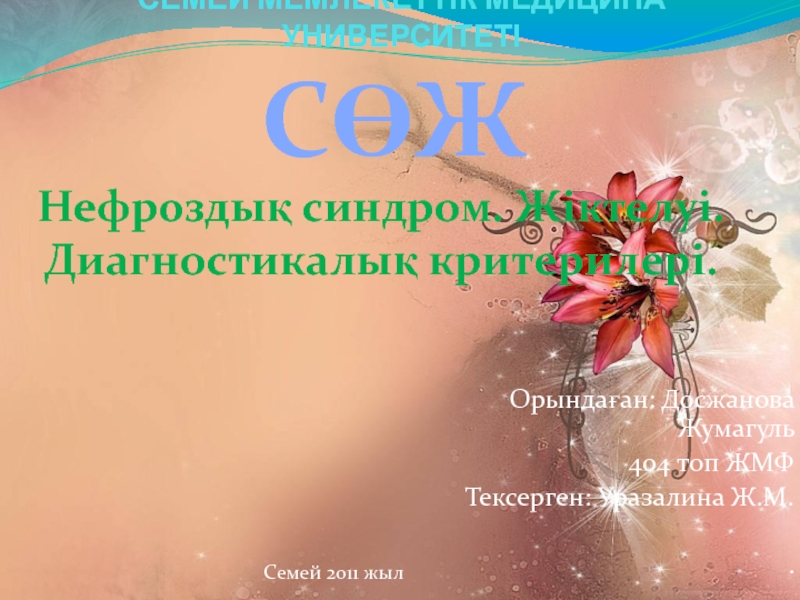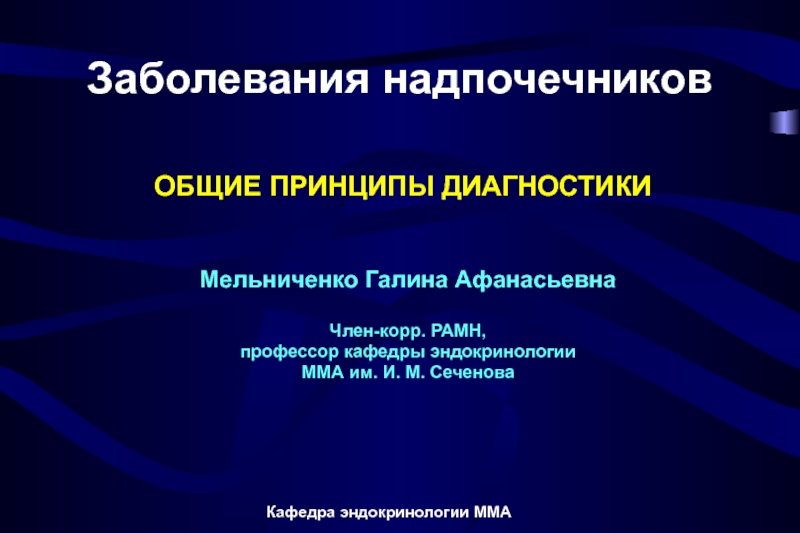- Главная
- Разное
- Дизайн
- Бизнес и предпринимательство
- Аналитика
- Образование
- Развлечения
- Красота и здоровье
- Финансы
- Государство
- Путешествия
- Спорт
- Недвижимость
- Армия
- Графика
- Культурология
- Еда и кулинария
- Лингвистика
- Английский язык
- Астрономия
- Алгебра
- Биология
- География
- Детские презентации
- Информатика
- История
- Литература
- Маркетинг
- Математика
- Медицина
- Менеджмент
- Музыка
- МХК
- Немецкий язык
- ОБЖ
- Обществознание
- Окружающий мир
- Педагогика
- Русский язык
- Технология
- Физика
- Философия
- Химия
- Шаблоны, картинки для презентаций
- Экология
- Экономика
- Юриспруденция
Current Treatment Strategies in Colorectal Cancer презентация
Содержание
- 1. Current Treatment Strategies in Colorectal Cancer
- 2. Epidemiology 3-d most common cancer
- 3. Colorectal Cancer Some facts 15% to 25%
- 4. Epidemiology CA: A Cancer Journal for
- 5. Epidemiologic Data in Israel Every year
- 6. Prevalence estimates in unscreened population Individuals
- 7. Risk factors for colorectal Cancer Hereditary colon
- 8. Staging of CRC is used to monitor
- 9. Treatment options for CRC Surgery Medical Chemotherapy Targeted therapies Radiotherapy
- 10. Surgery For invasive Carcinoma of the
- 11. STAGE III colon carcinoma ( T1-4N1-2)
- 12. Oncotype DX® Colon Cancer Assay The Challenge
- 13. The challenge: Which stage II colon
- 14. Integrating the Quantitative Recurrence Score® into Recurrence
- 16. Metastatic disease Liver metastases Abdominal cavity metastases
- 17. Metastatic disease: Chemotherapy Active chemotherapy drugs
- 18. Irinotecan ( CPT-11, Campto ) Camptotheca Acuminata Topoizomerase 1 inhibitor
- 19. Irinotecan Major Adverse Effect: Diarrhea Early
- 20. Oxaliplatin is classified as an "alkylating
- 23. Xeloda (capecitabine) - side effects Abdominal
- 25. Cont 5-FU 44h+LCV = De Gramont De
- 26. The Angiogenic Switch Is Necessary for
- 27. Avastin(Bevacizumab) inhibits vascularization —Avastin is an antibody
- 28. Bevacizumab precisely targets VEGF to inhibit angiogenesis1,2
- 29. Bevacizumab: one target, multiple effects1–20 1. Baluk,
- 30. June 2004: First Bevacizumab data from Phase III trial published in NEJM
- 31. Early separation of survival curves with bevacizumab – anti-VEGF AB
- 32. ML18147 study design (phase III)
- 33. OS: ITT population Unstratifieda HR: 0.81 (95%
- 34. Primary endpoint – PFS Secondary endpoints –
- 35. 100 75 50 25 0
- 36. TRIBE: RAS analysis Overall Survival Loupakis, et al. ASCO 2014 abs3519
- 37. Conclusion anti-VEGF Therapy Duration of VEGF-inhibition matters
- 38. What are the side effects seen most
- 39. Anti-EGFR therapy and colorectal cancer HER, human
- 40. Primary endpoint Progression-free survival Secondary endpoints Overall
- 41. Overall patient population
- 42. Key cancer biomarkers in patient care 1.
- 43. Biomarker-guided treatment has the potential to improve
- 44. Examples of predictive biomarkers in oncology 1-9:
- 45. Personalized treatment is a better approach than
- 46. Distribution of mutations in mCRC: A new definition
- 47. CALGB/SWOG 80405 data
- 48. CALGB/SWOG 80405: Randomized, open-label, multicenter (North America),
- 49. CALGB/SWOG 80405: Efficacy comparison of KRAS
- 50. m a b : 4 0 m
- 51. FIRE-3 PFS
- 52. FIRE-3 Overall survival Events n/N (%) Median
- 53. Greater selection of patients results in further
- 54. Panitumumab Panitumumab – a fully human anti-EGFR
- 55. PRIME study FOLFOX4 ± panitumumab
- 56. PRIME study RAS analysis OS (primary analysis)
- 57. What are the side effects seen most often? Cetuximab and Panitumumab
- 58. Regorafenib (Stivarga)
- 59. CLINICAL TRIALS
- 60. Optimized Treatment Strategy mCRC, palliative setting, PS
- 61. Rectal cancer
Слайд 2Epidemiology
3-d most common cancer in men
3-d most common cancer in
Worldwide: >1 million new cases/y
~600,000 deaths /y
2/3 cases occur in economically developed countries
Highest incidence rate: North America, Europe. New Zealand, Australia (generally in developed Western nations)
Слайд 3Colorectal Cancer
Some facts
15% to 25% have metastases at diagnosis
Up to 50%
If diagnosis is made early, CRC generally curable - 93% 5-year survival rate
However, only 39% of CRC are diagnosed early
For patients with widespread metastases,
5-yr survival rate is 8%
Good news is that mortality has significantly decreased over the last 30 years due to improvements in screening and treatments
Kindler and Shulman, 2001, Pazdur et al, 1999 , NCCN CRC Guidelines 2009
Слайд 4Epidemiology
CA: A Cancer Journal for Clinicians
Volume 63, Issue 1, pages
Слайд 5Epidemiologic Data in Israel
Every year ~3200 new cases of colon cancer
25% with metastatic disease on presentation
5-y survival for metastatic patients is about 5%
Ferlay et al GLOBOCAN 2000: All of Europe
Lung
16%
Breast
14%
CRC
14%
Kidney
3%
Stomach
6%
Other
5%
GI
7%
Bladder
5%
Head & neck
6%
Female reprod
8%
Hemato
logic
8%
Prostate
testis
9%
Слайд 6Prevalence estimates
in unscreened population
Individuals aged 50-y or older:
0.5 %
1 - 1.6% chance of in situ carcinoma
7 - 10% chance of a large ( >1 cm) adenoma
25 - 40% chance of an adenoma of an any size
Immigrants from low-incidence areas to high-incidence areas assume the incidence of the host country ( colorectal cancer) within one generation
Слайд 7Risk factors for colorectal Cancer
Hereditary colon cancer syndromes
Inflammatory bowel disease
Personal history
Family history of CRC
Aging
Dietary patterns
Environmental factors
Obesity / high caloric intake
Red meat
Fried/ barbecued meats
Low vegetable and fruit diet
Lifestyle (low physical activity)
Cigarette smoking
De Vita “Principles & practice of
Oncology” 8th edition
Слайд 8Staging of CRC is used to monitor the course of disease
Staging of CRC
http://www.hopkinscoloncancercenter.org
Metastases to
other organs
I
II
III
IV
Tumor in
colon wall
Stage 0
TNM classification of colorectal cancer stages
Слайд 10Surgery
For invasive Carcinoma of the colon stage I,II,III, surgery is
Surgical approach is dedicated by the lesions’ size and location in the colon
For stage II and III, there is a risk of residual
micro-metastatic disease
Adjuvant therapy role:
to eradicate the microscopic metastatic disease
Слайд 11STAGE III colon carcinoma ( T1-4N1-2)
5-y Overall Survival benefit ~ 10%
(oxaliplatin+5FU/Capecitabine)
STAGE II colon carcinoma ( T3-4 N0 )
5-y Overall Survival benefit ≤ 5%
(5FU/Capecitabine)
STAGE I colon carcinoma ( T1-2 N0 )
No benefit for 5-y Overall Survival
A
D
J
U
V
A
N
T
T
R
E
A
T
M
E
N
T
Слайд 12Oncotype DX® Colon Cancer Assay
The Challenge with the Stage II Colon
Implications for Clinical Practice in
Stage II Colon Cancer
Слайд 13 The challenge: Which stage II colon cancer patients should receive adjuvant
It is unclear which 75-80% of patients are cured with surgery alone
Absolute chemotherapy benefit is small
Chemo has significant toxicity and impacts quality of life
Selection of patients for chemotherapy is subjectively based on:
Risk assessment with a limited set of clinical/pathologic markers
Patient age, comorbidities, patient preference
Слайд 14Integrating the Quantitative Recurrence Score® into Recurrence Risk Assessment and Treatment
Resected stage II colon cancer
T stage, MMR status
T3 and MMR-D
low risk
T3 and MMR-P
standard risk
T4 and MMR-P
high risk
Consider observation
Oncotype DX®
Colon Cancer Assay
Consider chemotherapy
MMR-D, mismatch repair deficient; MMR-P, mismatch repair proficient
Слайд 16Metastatic disease
Liver metastases
Abdominal cavity metastases
Abdominal lymph nodes metastases
Pulmonary metastases
Bone metastases
Brain metastases
Слайд 17Metastatic disease:
Chemotherapy
Active chemotherapy drugs
5- Fluorouracil/LCV
Oxaliplatin
Irinotecan ( CPT-11 )
Combination chemotherapy:
5FU/LCV +
“ folfox”
5FU’LCV + IRINOTECAN
“folfiri”
5FU Oxaliplatin + Irinotecan
“folfoxiri”
Слайд 19Irinotecan Major Adverse Effect:
Diarrhea
Early onset
Caused by cholinergic effect of
During or immediately after Irinotecan infusion
Accompanied by flushing and abdominal cramping
Treatment: sc Atropin
Delayed
Cholera-like syndrome
Слайд 20Oxaliplatin
is classified as an "alkylating agent."
Peripheral neuropathy
Nausea and vomiting
Diarrhea
Mouth sores
Low blood counts.
Fatigue
Loss of appetite
Слайд 22
Overall survival:
Toxicity profile:
XELODA better than 5-FLUOROURACIL
=
5-FLUOROURACIL = XELODA
Слайд 23Xeloda (capecitabine) -
side effects
Abdominal or stomach pain
diarrhea
nausea
numbness, pain, tingling, or
pain, blistering, peeling, redness, or swelling of the palms of the hands or bottoms of the feet
pain, redness, swelling, sores, or ulcers in mouth or on lips
unusual tiredness or weakness
vomiting
Слайд 25Cont 5-FU 44h+LCV = De Gramont
De Gramont/ Irinotecan(cpt-11) = FOLFIRI
De
Xeloda / Oxaliplatin = XELOX
Слайд 26The Angiogenic Switch Is Necessary
for Tumor Growth and Metastasis
Somatic
mutation
Small
avascular
tumor
Tumor
Rapid tumor growth and metastasis
Carmeliet and Jain. Nature. 2000;407:249.
Bergers and Benjamin. Nat Rev Cancer. 2003;3:401.
Tumor is dormant
Neovascularization
Allows rapid tumor
growth by providing
oxygen, nutrients,
and waste removal
Facilitates metastasis
Angiogenic switch
Слайд 27Avastin(Bevacizumab) inhibits vascularization
—Avastin is an antibody that binds to VEGF and
(VEGF = vascular endothelial growth factor)
Слайд 28Bevacizumab precisely targets VEGF to inhibit angiogenesis1,2
Bevacizumab prevents binding of VEGF
Bevacizumab has a long elimination half life (~20 days), which may contribute to continuous tumour control3
1. Avastin SmPC 2013; 2. Presta, et al. Cancer Res 1997; 3. Avastin prescribing information, http://www.ema.europa.eu/docs/en_GB/document_library/EPAR__Product_Information/human/000582/WC500029271.pdf
Bevacizumab
VEGF receptor
VEGF
VEGF
Слайд 29Bevacizumab: one target, multiple effects1–20
1. Baluk, et al. Curr Opin Genet
Regression
of existing tumour vasculature1–3
Inhibition
of new vessel growth1–3,8
Consistently increased response rates4–7
Continuous control of tumour growth8–10
Reduction of ascites and effusions2,3,11,14–20
Anti-permeability
of surviving vasculature11–13
Слайд 32ML18147 study design (phase III)
CT switch:
Oxaliplatin → Irinotecan
Irinotecan → Oxaliplatin
Study conducted
Слайд 33OS: ITT population
Unstratifieda HR: 0.81 (95% CI: 0.69–0.94)
p=0.0062 (log-rank test)
Stratifiedb HR:
p=0.0211 (log-rank test)
aPrimary analysis method; bStratified by first-line CT (oxaliplatin-based, irinotecan-based), first-line PFS (≤9 months, >9 months), time from last dose of BEV (≤42 days, >42 days), ECOG performance status at baseline (0, ≥1)
Median follow-up: CT, 9.6 months (range 0–45.5); BEV + CT, 11.1 months (range 0.3–44.0)
Слайд 34Primary endpoint – PFS
Secondary endpoints – ORR, OS
Loupakis, et al. NEJM
TRIBE
Study design
Слайд 35
100
75
50
25
0
10
20
30
40
50
60
37.9
26.3
All WT
RAS MT
Overall Survival
Months
HR: 1.44 (1.07-1.92)
p=0.015
TRIBE: RAS analysis
RAS Status has
Loupakis, et al. ASCO 2014 abs3519
Слайд 37Conclusion anti-VEGF Therapy
Duration of VEGF-inhibition matters
Treatment to progression
Maintenance strategies
Treatment beyond progression
Clinical
BEV combinable with FOLFOXIRI (TRIBE)
Слайд 38What are the side effects seen most often?
High blood pressure
Too much
Nosebleeds
Rectal bleeding
Back pain
Headache
Taste change
Dry skin
Inflammation of the skin
Inflammation of the nose
Watery eyes
Слайд 39Anti-EGFR therapy and colorectal cancer
HER, human EGFR; MAPK, mitogen-activated protein kinase;
Adapted from Ciardiello F, Tortora G. N Engl J Med 2008; 358: 1160–1174
Anti-EGFR therapy
Слайд 40Primary endpoint
Progression-free survival
Secondary endpoints
Overall survival
Response
Safety
CRYSTAL: Erbitux + FOLFIRI vs FOLFIRI
in
EGFR-detectable
mCRC
R
Van Cutsem E, et al. J Clin Oncol 2011;29:2011–2019; Van Cutsem E, et al. N Engl J Med 2009;360:1408–1417
Erbitux
(400 mg/m2 day 1
+ 250 mg/m2 weekly)
+ FOLFIRI
(n=599)
FOLFIRI
(Irinotecan + 5-fluorouracil
[5-FU] + folinic acid [FA], q2w)
(n=599)
Stratification by
Eastern Cooperative Oncology Group Performance Status (ECOG PS) and region
Слайд 41
Overall patient population
Time (months)
54
42
48
Erbitux + FOLFIRI (n=599)
FOLFIRI (n=599)
0.0
0.2
0.4
0.6
0.8
1.0
18
0
6
12
24
30
36
OS estimate
HR=0.878
p=0.0419
19.9
18.6
Erbitux + FOLFIRI
Van Cutsem E, et al. J Clin Oncol 2011;29:2011–2019
Слайд 42Key cancer biomarkers in patient care
1. Committee on Developing Biomarker-Based Tools
and Treatment. Washington, D.C. The National Academic Press; 2007;
2. Heinemann V, et al. Cancer Treat Rev 2013; 39:592-601.
Слайд 43Biomarker-guided treatment has the potential to improve clinical outcomes
Conley BA, Taube
Kelloff GJ, Sigman CC. Eur J Cancer 2005; 41:491-501;
President’s Council of Advisors on Science and Technology (PCAST): ‘Priorities for Personalized Medicine’ September 2008;
Heinemann V, et al. Cancer Treat Rev 2013; 39:592-601.
Concentrate therapeutic interventions on patients likely to benefit
Efficacy
Efficiency
Spare expense in patients
not likely to benefit
Predictive
biomarkers
Spare potential side
effects in patients
not likely to benefit
Safety
Слайд 44Examples of predictive biomarkers in oncology
1-9: European Public Assessment Reports, available
1. Herceptin®; 2. Tyverb®; 3. Glivec®; 4. Iressa®; 5. Tarceva®; 6. Vectibix®;
7. Erbitux®; 8. Zelboraf®; 9. Xalkori®.
RAS, KRAS & NRAS exons 2/3/4
RAS: a predictive biomarker for anti-EGFR-targeted treatment in patients with mCRC
Слайд 45Personalized treatment is a better approach than “one treatment fits all”
KRAS
Time (months)
54
42
48
23.5
20.0
0.0
0.2
0.4
0.6
0.8
1.0
18
0
6
12
24
30
36
OS estimate
Erbitux + FOLFIRI (n=316)
FOLFIRI (n=350)
HR=0.796
p=0.0093
Even greater OS benefit with Erbitux + FOLFIRI vs FOLFIRI alone (KRAS wt population)
Van Cutsem E, et al. J Clin Oncol 2011;29:2011–2019
Слайд 48CALGB/SWOG 80405: Randomized, open-label, multicenter (North America), Phase III IST1*
1. Venook
Patients with untreated KRAS exon 2 wt
locally advanced (unresectable) or mCRC, ECOG PS 0–1
(N=1137**)
R
Experimental arm B
Cetuximab +
mFOLFOX6 or FOLFIRI†
Comparator arm A
Bevacizumab +
mFOLFOX6 or FOLFIRI†
Arm C
Bevacizumab + cetuximab +
mFOLFOX6 or FOLFIRI†
Arm C closed to accrual as of 09/10/2009
Continue treatment until PD, unacceptable toxicity or curative surgery
Primary endpoint: OS
Secondary endpoints: Response, PFS, time to treatment failure, duration of response, toxicity, 60-day survival, eligibility for surgery post-treatment, QoL
Protocol amended to KRAS exon 2 wt in 2008, after first 1420 patients enrolled
Слайд 49CALGB/SWOG 80405: Efficacy comparison of KRAS exon 2 wt and RAS
*733 KRAS codon 12/13 WT and 406 RAS evaluable patients are evaluable for response
The CALGB/SWOG 80405 study did not meet its primary endpoint of significantly improving OS in the cetuximab + CT vs bevacizumab + CT arm in patients with KRAS (exon 2) wt mCRC; Cetuximab should not be used for the treatment of patients with mCRC whose tumors have RAS mutations or for whom RAS tumor status is unknown2
Lenz HJ, et al. Ann Oncol 2014;25 (suppl 4) (Abstract 5010),
updated information presented at meeting; 2. Erbitux SmPC June/2014
*406 RAS evaluable and 319 RAS WT patients evaluable for response
Слайд 50m
a
b
:
4
0
m
g
m
i
.
v
.
1
2
0
m
i
n
i
n
i
t
i
a
l
d
o
s
e
2
5
0
m
g
/
m
2
i
.
v
.
6
0
m
in
q
1
w
B
e
v
a
c
i
z
u
m
a
b
:
5
m
g
/
k
g
i
.
v
.
3
0
-
9
0
m
i
n
q
2
w
/
0
i
FIRE-3 Phase III study design
C
e
t
u
x
2
FOLFIRI
+ Cetuximab
FOLFIRI + Bevacizumab
Bevacizumab: 5 mg/kg i.v. 30-90min q 2w
mCRC
1st-line
N= 592
Randomize 1:1
FOLFIRI: 5-FU: 400 mg/m2 (i.v. bolus); folinic acid: 400mg/m2
irinotecan: 180 mg/m2 5-FU: 2,400 mg/m2 (i.v. 46h)
Heinemann et al., ASCO 2013
Слайд 51FIRE-3 PFS
0.75
1.0
0.50
0.25
Probability of survival
Events
n/N (%)
Median (months)
10.0
95% CI
― FOLFIRI + Cetuximab
250/297
(84.2%)
8.8 –
― FOLFIRI + Bevacizumab
242/295
(82.0%)
HR 1.06 (95% CI 0.88 – 1.26)
10.3
9.8 – 11.3
Log-rank p= 0.547
0.0
12
24
36
48
60
72
months since start of treatment
numbers
297
100
99
19
15
10
6
5
4
3
at risk 295
Heinemann et al., ASCO 2013
Слайд 52FIRE-3 Overall survival
Events n/N (%)
Median (months)
28.7
95% CI
― FOLFIRI + Cetuximab
158/297
(53.2%)
24.0 –
― FOLFIRI + Bevacizumab
185/295
(62.7%)
HR 0.77 (95% CI: 0.62 – 0.96)
25.0
22.7 – 27.6
Log-rank p= 0.017
0.75
1.0
0.50
0.25
0.0
12
24
36
48
60
72
months since start of treatment
numbers
297
218
214
111
111
60
47
29
18
9
2
at risk 295
Heinemann et al., ASCO 2013
Слайд 53Greater selection of patients results in further improvement in OS
Heinemann V,
Слайд 54Panitumumab
Panitumumab – a fully human anti-EGFR mAb
inhibits ligand binding and
Fully human, monoclonal IgG2 antibody
Binds with high affinity and specificity to the extracellular domain of the human EGFR
Dissociation constant: KD=0.05 nM1
Inhibits receptor activation of all known EGFR ligands2
Inhibits EGFR-dependent activity including cell activation and cell proliferation in various tumours2-5
1. Freeman D, et al. J Clin Oncol 2008; 26(15S):14536;
2. Yang XD et al. Cancer Res 1999; 59:1236-43;
3. Foon KA, et al. Int J Radiat Oncol Biol Phys 2004; 58:984-90;
4. Hecht JR, et al. Proc Am Soc Clin Oncol 2004; 22:A3511;
5. Crawford J, et al. Proc Am Soc Clin Oncol 2004; 22:A7083.
EGFR
Слайд 55
PRIME study
FOLFOX4 ± panitumumab in 1st-line treatment of metastatic CRC
www.amgentrials.com;
HRQoL, health-related quality of life
Metastatic
CRC
(n = 1183)
R
1:1
Study endpoints: PFS (1°); OS, ORR, safety, HRQoL
KRAS status was prospectively analysed
L
o
n
g
t
e
r
m
f
o
l
l
o
w
u
p
Disease assessment every 8 weeks
E
n
d
o
f
t
r
e
a
t
m
e
n
t
Слайд 56PRIME study RAS analysis
OS (primary analysis)
Douillard JY, et al. N Engl
WT RAS, WT KRAS & NRAS exons 2/3/4
(includes 7 patients harbouring KRAS/NRAS codon 59 mutations)
0
2
4
6
8
10
12
14
16
18
24
20
22
36
26
28
30
32
34
Proportion alive (%)
100
90
70
60
80
50
40
30
20
10
0
Months
HR = 0.78 (95% CI, 0.62–0.99)
P = 0.043
WT RAS
Слайд 60Optimized Treatment Strategy
mCRC, palliative setting, PS 0-1
Unresectable Liver and Retroperitoneal LN
Molecular testing
